COSTA RICA Nicoya Peninsula
Peninsula de Nicoya Travel and Vacation Guide

Cabo Blanco
Cabo blanco nature reserve.

Nestled on the extreme southern tip of the Nicoya Peninsula is the Cabo Blanco Nature Reserve, one of the most scenically beautiful areas of Costa Rica .
Cabo Blanco holds a special place in the history of Costa Rica. It was the country’s first area that was protected for nature conservation, and the first National Park created in Costa Rica in 1963. See The History of Cabo Blanco
The reserve is named after the island Cabo Blanco, located 1.6 km from the reserve’s southern tip. Since the times of the Conquistadores it has been known as the "White Cape" because encrusted guano covers the rocks. Cabo Blanco is an important seabird sanctuary and popular with ornithologists. It hosts large numbers of brown pelicans, frigate birds, laughing gulls, common terns, ospreys and Costa Rica’s largest community of brown boobies. See List of Birds in Mal Pais and Cabo Blanco (pdf)
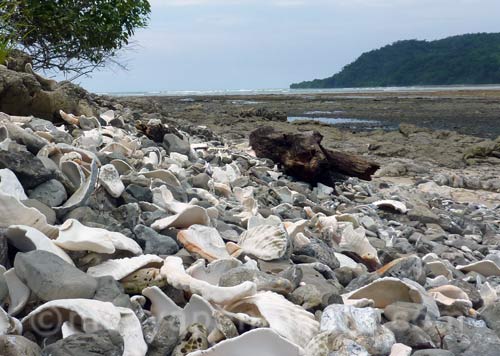
Along the coast of the reserve are various roost trees to which large numbers of pelicans retire each evening. In the late afternoon from the beaches of Mal Pais and Santa Teresa you can watch them gliding past in their long V-shaped formations.
The abundance of bird life matches the wildlife found under water. 1,788 hectares of ocean belong to the Cabo Blanco nature reserve, protecting many species of fish, large quantities of lobster, giant conches and oyster. The ocean in front of Malpais
Nature and Wildlife of Cabo Blanco:

The Cabo Blanco Nature Reserve encompasses 1,270 hectares of mixed forest which is classified as moist tropical forest. Around 150 species of trees have been identified. Evergreen species predominate, but deciduous dry forest species are found as well. Among the most common trees in Cabo Blanco are Madroño (Lance Wood), Guácimo (Bastard Cedar), Jobo (Hog Plum), Indio Desnudo (Gumbo Limbo) and Guarumo (Cecropia). The most abundant tree is the Pochote (Spiny Cedar) with some specimens that have grown over 40 m high. Other impressively tall trees are the Ceiba (Silk Cotton Tree) which can tower up to 60 m, and the fast growing Espavel (Wild Cashew). The unique climate and geographic location of Cabo Blanco also provides habitat for rare tree species like the Camibar which cannot be found anywhere else on the Nicoya Peninsula expect Cabo Blanco.

The majority of Cabo Blanco is secondary forest which is around 60 years old. The remaining patch of primary forest only accounts for roughly 15% of the area. It is located at the highest point of the reserve, inaccessible for visitors.
The forest provides refuge to a large variety of animals like white-tailed deer, pacas, armadillos, anteaters, howler and capuchin monkeys, coyotes, porcupines, raccoons and coatis. There are also wild cats like ocelots, jaguarundis and margay cats but it is almost impossible to see them in the wild. See Animals of the Nicoya Peninsula
Around 240 species of birds have been recorded in Cabo Blanco. Apart from sea birds you can also see magpie jays, motmots, long-tailed manakins, crested caracaras, black-headed and elegant trogons, chachalacas, ringed kingfishers and various types of parrots and parakeets.
Visiting Cabo Blanco
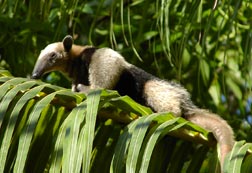
Cabo Blanco was originally established as an "Absolute Nature Reserve" whose access was restricted to scientists and park rangers. Today visitors are allowed to hike through the reserve on two designated trails: the "Sueco" and the "Danes Trail". You can increase your chances of seeing animals if you move slowly and silently through the trails, or sit quietly at a riverside. In dry season the visibility through the thickets is better, as many trees and shrubs shed their leaves.
The Cabo Blanco park is open from Wednesday to Sunday , 8 am – 4 pm. Entrance fee is $ 12 From Montezuma and Cabuya a small public bus drives to the park entrance four times per day. From Malpais there is no entrance to the Cabo Blanco park. You have to drive from Malpais to Cabuya
Map of Cabo Blanco
At the entrance to the nature reserve you find a booth with information about the wildlife and history of Cabo Blanco. The rangers at the station are very helpful in answering questions and there is also a tap for filling up water bottles.
If you want to hike the Sueco Trail to the Cabo Blanco beach you should arrive at the park no later than 12 am as you will need at least 4 hours for the 4.2 km to the beach and back. The trail is moderately difficult because it rises up steeply before dropping down to the beach. An easier, shorter walk is the 1.5 km loop of the Danes Trail .
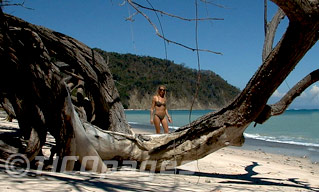
The gorgeous white-sand beach of Playa Cabo Blanco lies in a half-moon bay framed by cliffs and rocky headlands. Here you can experience that Robinson Crusoe feeling and enjoy a well-deserved, luxurious bath on the pristine paradise beach.
When looking for a shady place on the beach, take care not to sit under the “Manzanilla” tree whose excretions can cause skin irritations.
Take nothing with you from the park (besides your trash of course). Even driftwood and empty shells are part of the maritime life cycle.
The history of Cabo Blanco
Costa Rica’s first Nature Reserve

In the 1950s the government of Costa Rica encouraged their citizens to "develop" the land on the isolated southern part of the Nicoya Peninsula. For clearing a piece of land, people were rewarded with its ownership. Within a few years much of the dense woodland of the peninsula had been "cultivated".
In the early sixties the Swede Nicolas Wessberg (also known as Olaf or Olle) came to Costa Rica with his Danish wife Karen Mogensen. The young couple bought a farm near Montezuma and Olaf Wessberg often went to Cabo Blanco to collect seeds for their orchard.
By this time only a small piece of primary forest was still left on Cabo Blanco. Impressed by the abundant wildlife and the enormous size and diversity of trees, Nicolas Wessberg wanted to preserve the area. With the aid of foreign conservation organizations he bought 1,250 hectares of land and after persistent talks with the Costa Rican government the status of an Absolute Nature Reserve was given to Cabo Blanco in 1963.

The Cabo Blanco Nature Reserve was the initial step in the development of Costa Rica’s extensive national park system which led to the country’s successful eco-tourism.
Sadly, in 1975 Olaf Wessberg was assassinated on the Peninsula de Osa where he supported the creation of the Corcovado National Park. Undeterred by her husband’s death his wife Karen and many others continued with his conservation projects. Two nature reserves on the Nicoya Peninsula have been named after them: the The Karen Mogensen Nature Reserve in the mountains of the peninsula and the Nicolas Wessberg Absolute Reserve located along the beach north of Montezuma .
More about Olaf Wessberg: • Olaf Wessberg and the Creation of Costa Rica’s first National Park (PDF) • Pictures of Olaf Wessberg and Karen Mogensen

Two Weeks in Costa Rica
Travel and Moving Blog
Cabo Blanco Nature Reserve: Rugged Hiking on the Nicoya Peninsula
- Jenn and Matt
- Activities , Hiking , National Parks & Reserves
Cabo Blanco Nature Reserve (Reserva Natural Absoluta Cabo Blanco), located just south of Montezuma, is a special place. It was Costa Rica’s first nature reserve, created back in 1963. In that regard, Cabo Blanco epitomizes the country’s commitment to conservation.
Cabo Blanco offers a challenging hike through thick tropical forest. A gorgeous beach at the end of the trail is the reward for a long day of trekking. This park is a must-see for those venturing to the remote southern Nicoya Peninsula. Below are our tips for planning your visit to Cabo Blanco Nature Reserve.
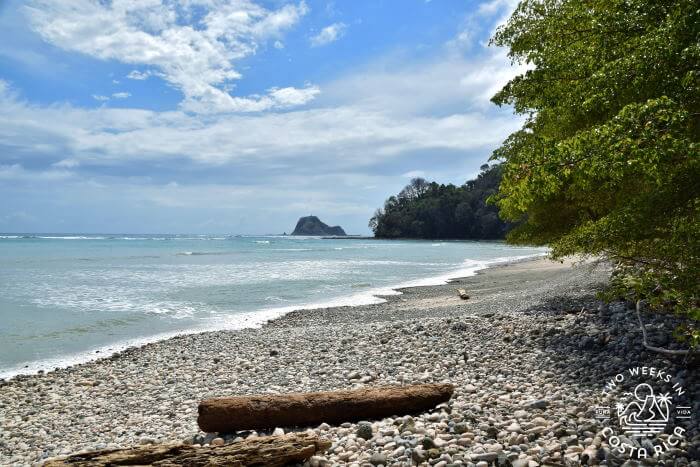
Cabo Blanco Nature Reserve is a 3,393 acre (1,373 hectare) reserve that sits at the very southern tip of the Nicoya Peninsula. In addition to protecting this huge swath of tropical rainforest and dry forest, it also encompasses 4,171 acres (1,688 hectares) of marine land. Here is a link to an interesting map showing the protected land and marine areas.
Cabo Blanco is off-the-beaten path, so it tends to see fewer visitors compared to Costa Rica’s other national parks .
To the west is the popular surf destination of Santa Teresa/Mal Pais . To the east is a laid-back beach town called Montezuma . The Reserve is just a short drive from Montezuma. From Santa Teresa, it takes about an hour due to rough roads. See below for driving directions.
Although the park borders the village of Mal Pais near Santa Teresa, you cannot enter from this side. Access is limited to the ranger station near Cabuya, south of Montezuma.
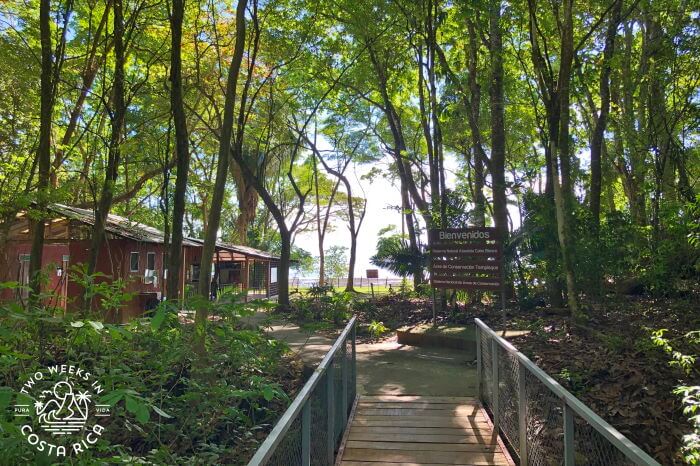
The Trails at Cabo Blanco Nature Reserve
The Reserve has two trails. The main trail, Sueco Trail, leads to the beach. There is also a short trail called Danes Trail.
Danes Trail
If you’re looking for a short hike, the Danes Trail offers a nice loop. This trail is off the Sueco Trail, not far from the ranger station. It is 2 km (1.2 miles) so a good option if you want to experience the tropical forest without hiking for too long.
Sueco Trail
The Sueco Trail is the reason why most people visit Cabo Blanco Nature Reserve. But this hike shouldn’t be taken lightly. It is 5 km to get to the beach, and another 5 km back to the ranger station, totaling 10 km or 6.2 miles. For most people, it takes about 2 hours each way. Most recently, we did the hike with our preschooler and 1.5 year old in a baby carrier. It took us about 2.5 hours each way. It was not easy for our 5-year old, but he made it and he was still smiling at the end!
Tip: Be sure to arrive at the Reserve no later than around 11:00 a.m. if you want to do the trail to the beach. The park closes at 4:00 p.m. and you’ll need about five hours to do the hike and have some free time to relax and enjoy the beach.
Trail Conditions
The Sueco Trail passes through dense tropical forest. Overall, the trail is well maintained but very rustic.
From the ranger station, it starts fairly easy, with some steep parts. Often, the steep portions have rustic steps made from uneven concrete pavers, which make things a little easier.

The middle 2 km or so (1.2 miles) is challenging at times. There are many portions where you’re hiking up a sharp incline for a few minutes. Sometimes it can be hard to get your footing due to the irregular terrain. Tree roots, rocks, and loose gravel are all obstacles along the way. We found using a walking stick to be helpful.
You’ll also have to cross a few shallow rivers. These have makeshift rock “bridges,” so you just have to keep on top of the rocks to not get wet. In dry season (December through end of April), these rivers don’t have much water flowing, but they can get bigger during rainy season.
The last 2 km (1.2 miles) is fairly easy with some steep sections. Especially as you get down to beach level.
What You’ll See
As you roll up and down the hilly terrain, you’ll see gigantic trees draped with vines, exotic flowers, strange seedpods, and lots of wildlife.

We have been to the park a couple of times. On each visit, we’ve heard howler monkeys grunting in the canopy and have seen a large family of coati (racoon-like animals) foraging on the forest floor. Most recently, as we neared the beach, we met a troop of white-faced monkeys. They were in the treetops, but we managed to get a close-up of some of them.
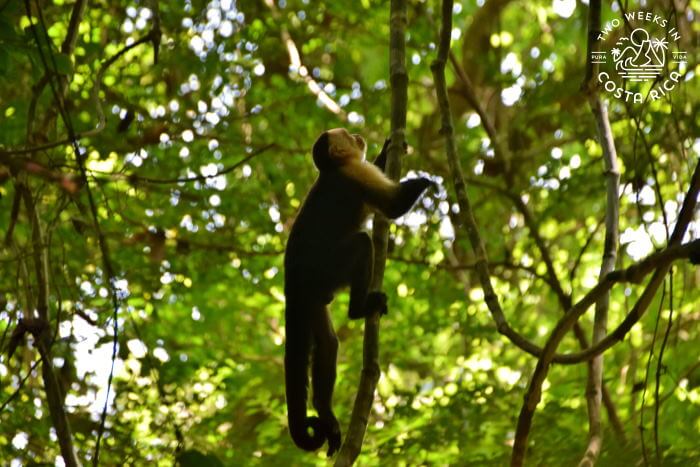
Even just driving along the small road to the ranger station, we have seen white-tailed deer hiding in the shrubs.
Other animals that can be spotted include anteaters, raccoons, and porcupines. We’ve also heard from more than one of our readers that they have seen a big cat, like a puma! We haven’t been so fortunate ourselves but can see how these elusive animals could be found in such a remote place.
We have also seen many types of butterflies and birds. For birds, we have spotted trogons, wrens, and Brown Booby seabirds. Many seabirds nest on the tall island just off the coast, Isla Cabo Blanco.
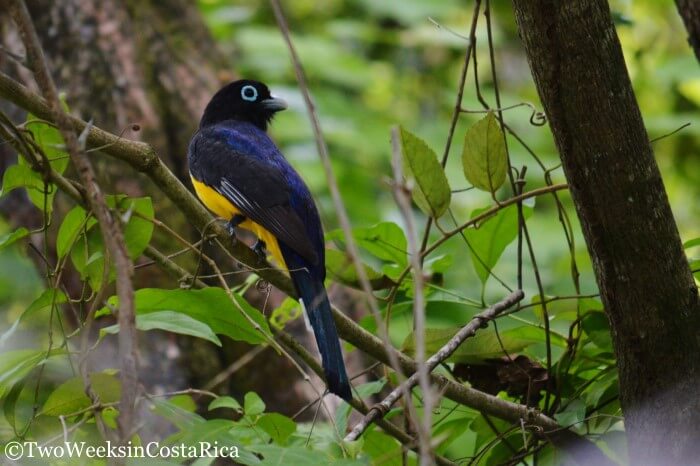
One of the best parts of the hike is arriving at the beautiful Playa Cabo Blanco.
This beach can be reached only on foot (or by boat) so it really makes you feel like you have discovered something special. The sand is bright white. Much of it is cover ed with perfectly round, smooth white rocks. If you walk towards the right, you’ll find some sand to put down a towel.
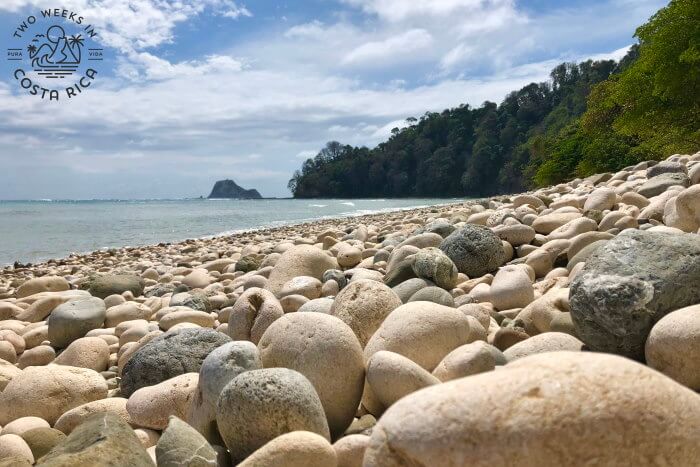
The water in the cove is a gorgeous turquoise color. While the waves aren’t usually too strong, it does drop off suddenly so it’s better for wading than swimming.
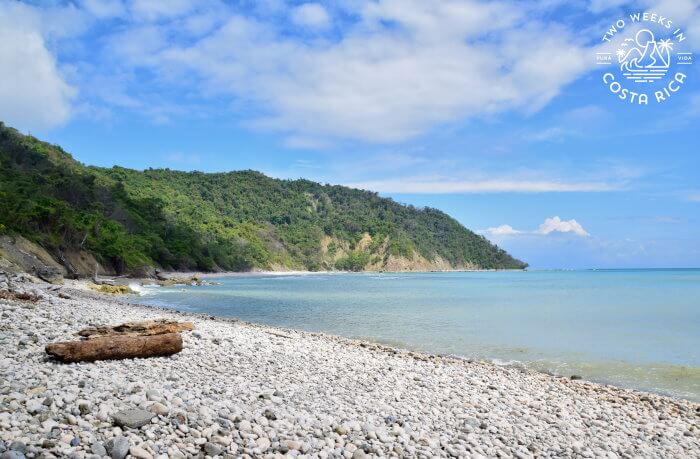
Planning Your Visit to Cabo Blanco Nature Reserve
Foreigners: $12 per person adults. $5 children ages 6-12. Free for children 5 and under.
Citizens and Residents: 1,600 colones adults. 500 colones children ages 6-12. Free for children 5 and under.
Wednesday through Sunday, 8:00 a.m. to 4:00 p.m.
The park is closed on Mondays and Tuesdays to limit the impact on wildlife.
Accessibility
This Reserve is not handicap accessible.

What to Bring
Be sure to wear closed-toe, good-gripping footwear. Hiking boots or sneakers are fine. The trail can get muddy during rainy season (May through November).
Also bring sunscreen, insect repellent, and binoculars if you are into birding.
Since it is a long hike and the park is very remote, pack a lunch or at least some snacks.
Bring plenty of water as you’ll be hiking for several hours in 80°+ F (27° C) degree heat.
Finally, don’t forget to wear your bathing suit under your clothes or bring it to change into. You’ll definitely want to enjoy a quick dip in the Pacific to cool off after reaching the beach. There is no changing room at the beach, but they do have some rustic showers to rinse off after.
For more tips on what to bring, check out our post on Packing Your Daypack .
Getting There
Public bus from montezuma.
If you’re staying in Montezuma and won’t have a rental car, it’s easy to take the public bus. You just need to plan so that you have enough time for your hike back.
Buses leave Montezuma for Cabuya around 8:15 a.m. and 10:15 a.m. They return at 11:20 a.m. and 3:20 p.m. *Double check the schedule when you’re in Costa Rica for the most up-to-date information. The ride is around 40 minutes.
The bus will drop you off at the turnaround before the park entrance. Then, you’ll have a short walk to the ranger station (5-10 minutes).
Driving Directions
If you have a rental car, you can drive right to the ranger station, which is located just south of the town of Cabuya. There is a small parking area near the ranger building.
From Montezuma
The drive from Montezuma is about 25 minutes, depending on road conditions. Take the dirt road south out of town. Follow it along the coast until you reach the small town of Cabuya. In Cabuya, keep left on the main road, following signs for Reserva Natural Absoluta Cabo Blanco.
Be sure to keep a lookout for the giant strangler fig tree on the right-hand side as you approach Cabuya. It is said to be one of the largest trees in Costa Rica!
From Santa Teresa
Main/easiest route.
There are a few different roads you can take from Santa Teresa. Many are back roads, which are rough dirt. Some have river crossings. So be sure to plan your route in advance.
Note: Cell phone coverage is very spotty once you get out of the main towns so be sure to download maps offline or use GPS.
The easiest way from Santa Teresa is to go back to Cobano, then take the main road to Montezuma (Route 624). Turn right when you reach the end of Route 624 in Montezuma and continue south along the coast until you get to Cabuya. In Cabuya, keep left on the main road, following signs for Reserva Natural Absoluta Cabo Blanco. Drive time is about one hour.
Adventurous Route During Dry Season
In the dry season when there has been little rain (approx. January to April), you can go a more direct way via Mal Pais. You’ll need a solid SUV and 4×4 for this. But it ends up being faster than going the long way up to Cobano.
In Mal Pais, take a left off the main road shortly after La Esquinita Coffee and Deli. This rough dirt road cuts directly across the peninsula to Cabuya. It’s slow going and there are some steep stretches as well as several river crossings. Water levels are usually not too deep in dry season, though. If you aren’t sure, always get out of your car to check first or wait for another car to cross before you.
Here is a map showing this route option.
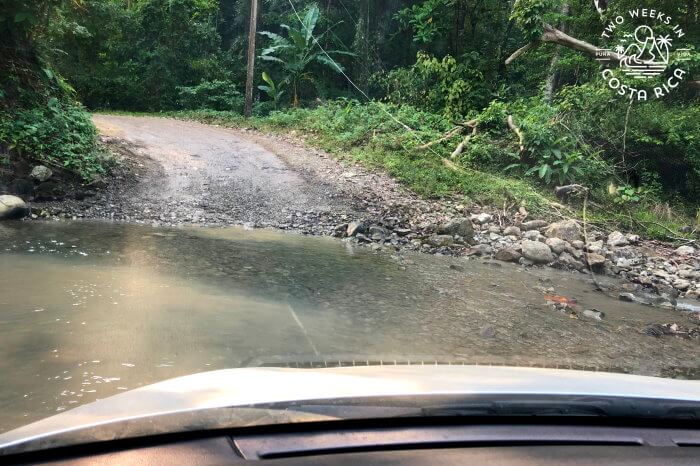
Our visits to Cabo Blanco Nature Reserve have always reminded us of why we love hiking in Costa Rica. Not only is the scenery gorgeous, but it offers the ideal amount of physical activity and wildlife viewing. To top it all off, you get to cool off in the Pacific Ocean and enjoy the beach. It’s the perfect balance.
Have a question about visiting Cabo Blanco Nature Reserve or have you been yourself? Let us know in the comments below.
Looking for more information to plan your trip to the nicoya peninsula check out these posts:.
Montezuma: A Bohemian Beach Town – Montezuma is an eclectic beach town with a cute main area along the sand. Read our detailed guide for more info.
Mal Pais Tide Pools and Natural Hot Tubs : If you’re visiting Santa Teresa/Mal Pais, these swimmable tide pools are a must-visit. They would also make a fun day trip from Montezuma.
Taking the Puntarenas-Paquera Ferry : The ferry is a great way to access the southern Nicoya Peninsula. It breaks up the drive and offers some fantastic views of the Gulf of Nicoya.
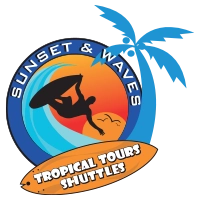
- Cabo Blanco Reserve
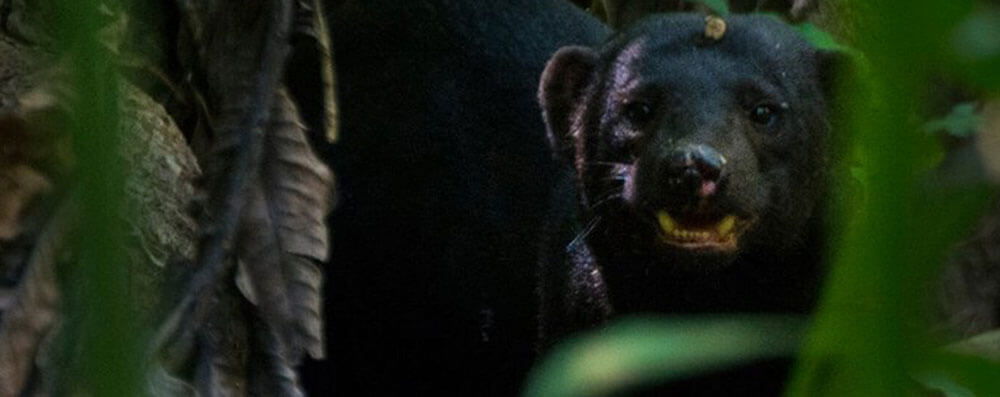
The Cabo Blanco Absolute Nature Reserve
What to expect.
If you are staying at Montezuma or Malpais Santa Teresa and you’re not planning to move too far around to find nice places to visit, then this is an option, just like The Wildlive Refuge of Curú, this tour is great for those who love nature and peaceful places.
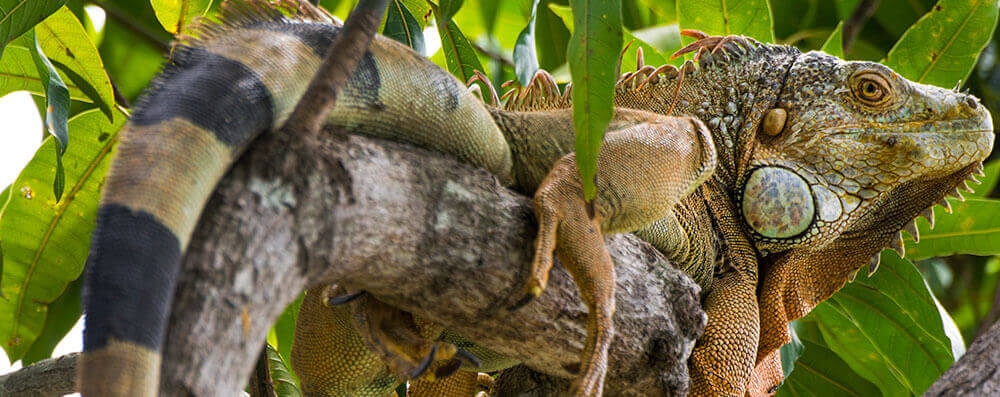
The Cabo Blanco Nature Reserve, besides its beautiful flora and fauna of course, what really makes this reserve special is its location, it’s in fact the tip of The Nicoya Peninsula down south. If you search for it on a map you can see how it faces the open ocean like the prow of a boat, this particular geological characteristic makes it a favourite place for many animals, not only local, but elsewhere species, like: killer whales, humpback whales and many bird species from all America, use this place as a stop point on their journey.
In addition, next to the coast is the Cabo Blanco Rock visible from the shore, which was used as a lighthouse many years ago, habitat of hundreds of birds.
What’s the main attraction
This tour is open to your own opinion, just like many other Costa Rican places it only shows a small portion of the whole diversity. The Reserve has 2 paths to choose (Sendero Danés and Sendero Sueco) one smaller than the other respectively, in wich you can go for a small round trip or you can take the 2 hours walk all the way to the other side of the park. On your way, many native species might show up, so a quiet walking is recommended if your plan is to see them. Followed by time to rest and some fruits and beverages are provided.
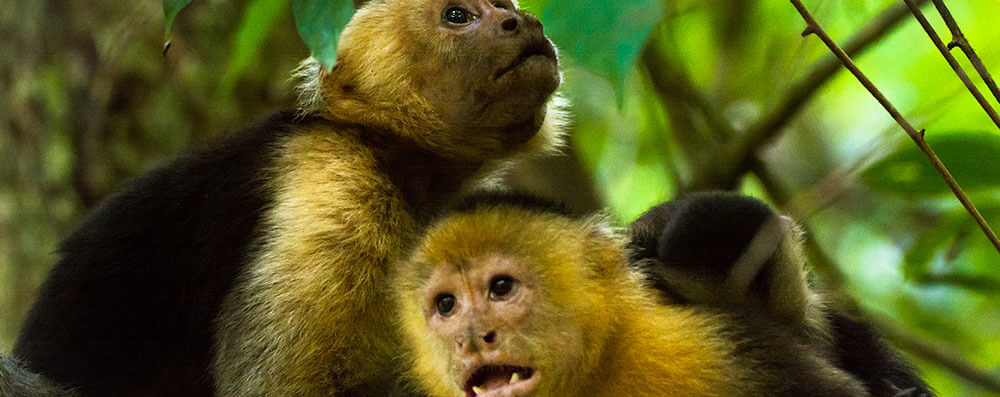
Other Details
The Tour starts at 7 am leaving from your hotel, the naturalist guide will pick you up on a mini van. Make sure you bring water and comfortable closed shoes, the walk is up hill, so take it under consideration, but nothing dangerous or hard to accomplish for a family group.
Tour Price Per Person (minimum 4)
Daily schedules:.
- 07:00 – 12:00 | 5 hrs
- Transportation
- English speaking naturalist guide
- Entrance fees
- Fruits and snacks
We recommend to bring:
- Closed shoes
- Mosquito repellent
Transportation details:
- Transportation is included from any hotel in Montezuma, Mal Pais or Santa Teresa.
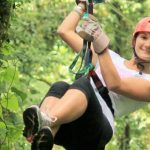
Canopy Tour Montezuma
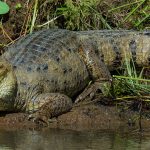
Wild live Refuge of Curú
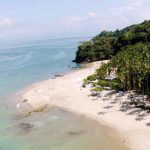
Tortuga Island
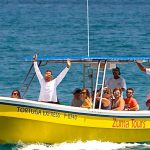
Taxi Boat Tour
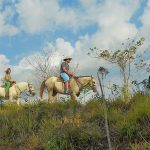
Horseback Riding
Where are we.
Our main office is in Santa Teresa, Costa Rica in front of the National Bank on the Nicoya Peninsula. View Map
Office: +506 2640 1900
Office: +506 2640 0811
Mobile: +506 8890 9197
Facebook Page
TropicalToursShuttles
- All Destinations
- National Parks
- The Pacific
- TRANSPORTATION
- Cost of Living
- Costa Rica Education
- Health Care
- Work in Costa Rica
- Residency Overview
- Restaurants
- 15 Day Weather Forecast
- Weather Regions
- Dry Season vs Wet Season
- Holiday & Festivals
- National Flag
- Customs & Etiquette
Real Estate
- Featured Properties
- Local Real Estate
- Before you buy
- Real Estate FAQs
- Find my Property
- Find my Rental
- Tres Leches
- Rice with Chicken
- Cheese Beans Turnover
- Gallo Pinto
- Costa Rican Food
- Before Doing Business in Costa Rica
- Setting up a Corporation
- Demographics
- Economic Indicators
- Aug. 30-Aug. 30 San Ramon Patron Saint Day
- Oct. 9-Oct. 9 San Isidro Anniversary
- Oct. 11-Oct. 22 Puerto Viejo Carnival
- Oct. 12-Oct. 12 Virgin of Pilar Day
- Oct. 15-Oct. 18 Upala Corn Festival
Travel Blog
- My First Cup of Coffee
- Top Six Extra Things to Pack on Your Next Trip Abroad
- Ten Things to do on the beach in Manuel Antonio
- Eating Alone in Costa Rica
- Nosara Yoga: Switching the Channel
- Riding a bus to Sierpe in Costa Rica
- High speeds, high waves, high in the air over Manuel Antonio
- In-shore fishing off the coast of Manuel Antonio
- Enjoying Puerto Viejo on $28 a day
- How conservation saved Tortuguero
Living in Costa Rica Blog
- Protecting the kinkajous in Manuel Antonio
- Learning Spanish at Rancho Margot
- Backyard Surf Series on Hermosa Beach
- Life in the Monteverde Countryside
- Border Crossing: Nicaragua by Boat
- The Top 5 Reasons I love living in Tamarindo
- A Look Back: Tamarindo, Six Months Later
- Fruit of the Month: Cas
- E-Voting Info for American Expats
- Naturalized Costa Rican Citizenship by Marriage
- Red Eyed Tree Frogs
- White-faced Monkeys
- Scarlet Macaws
- Leatherback Sea Turtles
Itineraries
- 6 Day Best of Activities
- 10 Day Nature Lovers
- 15 Day Best of Destinations
- 12 Day Honeymoon
- 5 Best Waterfalls
- Spectacular Beaches
- Best of Activities
- Best Kept Secrets
- Best of Destinations
- Sky Trek Canopy Tour
- Celeste River Waterfall
- Superman Canopy Tour
- Tortuguero Canal Tour
- Journey to Cocos Island
Medical Tourism
- Dental Care
- Book a Medical Vacation with Us
- Cosmetic Surgery

Cabo Blanco Reserve Wildlife Observation
- Passionate local guide with wealth of knowledge of local flora and fauna
- Intimate hike through impressive forest regrowth and primary forest
- Picture opportunities at Lajas River
- Hours : 7 a.m. – 1 p.m., flexible timing
- Time length : 3 hours
- Price : $100 per person
- Note : Transportation to and from hotel, snacks and water provided
Soak up the grandeur of the world-renowned Cabo Blanco Absolute Natural Reserve, hiking in the mist of tall Guanacaste, fichus and spiny cedar trees, listening to its wild bird sounds and calls, and sighting wildlife. You will unveil your own innate respect for all natural resources – even those ones back home - that allowed this reserve to thrive.
All along the journey, starting and ending at your hotel in Montezuma/Santa Teresa/Mal Pais, a local guide gives the insider's scoop about the local communities as he points out amazing wildlife you may not notice without his keen eye. He'll bring you through Montezuma, past the cobalt-blue coast, and stop at the Lajas River to take pictures of pink rosette spoonbills and common basilisks (Jesus Christ lizards) running across the water surface.
From the Cabo Blanco visitor's station in Cabuya, you'll take the 1.5-mile Danes trail, spotting tons of wildlife including howler and capuchin monkeys, pale-billed woodpeckers, gray headed tanagers, lineated sack bats, white nose coati and white tailed deer. You'll cross clear water creeks flowing through the tropical dry forest displaying its 60-year-old regrowth after many years as cattle farms. Also, you'll have the exclusive chance to see old-grown forest in its absolute natural condition.
Showing respect for Cabo Blanco's impressive forest regrowth goes beyond just admiring trees, plants, birds and mammals during the relaxed two-hour hike. When the trail ends, you'll replenish your energy with all-natural oatmeal cookies and drink water from compact-recyclable water bottles at a picnic table in front of a panoramic view of Playa Cabo Blanco and Cabuya Island.
Departure & Return
- Departure point : Tour departs from all major hotels in Malpais, Santa Teresa, Montezuma and Cabuya
- Departure time : Hotel pickup is between 20 and 50 minutes before tour start time depending on hotel location.
- Return details : Tour returns to original departure point between three and four hours after tour start time
Cabo Blanco Reserve Wildlife Observation in Pictures
Escalena plant cabo blanco reserve - costa rica.
Ants On Steps Cabo Blanco Reserve - Costa Rica
Creek Shaded By Tall Trees Cabo Blanco Reserve - Costa Rica
Coati Feeding Cabo Blanco Reserve - Costa Rica
Creek Trail Water Cabo Blanco Reserve - Costa Rica
Ocean View From Lajas River - Costa Rica
Creek Trail - Costa Rica
Ibis On Lajas Rivermouth - Costa Rica
Ocean View Point At Entrance Cabo Blanco Reserve - Costa Rica
Brown Bird - Costa Rica
Creek - Costa Rica
Mushroom - Costa Rica
Orange Mushrooms Cabo Blanco Reserve - Costa Rica
Fallen Tree Cabo Blanco Reserve - Costa Rica
Watermelon Pineapple Granola Bar Snacks Cabo Blanco Tour - Costa Rica
Visitor Center Cabo Blanco Reserve - Costa Rica
Woodpecker Stairing At The Camera - Costa Rica
Woodpecker Looking Down Cabo Blanco Reserve - Costa Rica
Exceptional Ficus Tree Lower Part - Costa Rica
Tree Body Cabo Blanco Reserve - Costa Rica
Two Birds At Lajas River Mouth - Costa Rica
Yellow Bird Eating Ants - Costa Rica
Trail Steps - Costa Rica
Tree Bark Cabo Blanco Reserve - Costa Rica
Yellow Bird Getting Ready To Eat Ants - Costa Rica
Tall Tree Cabo Blanco Reserve - Costa Rica
Book this tour with us!
Please provide the following information so we can assist you planning your trip. (*) denotes required information.
Date & Time
How many people will take the , where do we pick you up.
- Contact Info
- Testimonials & Reviews
- Advertise with Us!
Signup for our newsletter
Stay in touch and get the inside scoop.
- Privacy Policy
- Terms & Conditions
© 1996-2024 costarica.com, Inc. All rights reserved.
- Enter Costa Rica
- Tambor Tours
Cabo Blanco Absolute Natural Reserve
Free vacation planning.
This guided nature walk will take you into a protected wilderness where you’ll find yourself surrounded by mesmerizing sights and sounds of a large variety of birds and jungle creatures living in two types of forest environments. With over 140 different species of tropical trees and encompassing over 3,000 acres of both dry and wet forest, this reserve provides a drastic contrast of ecosystems that people of all ages find fascinating to explore.
Your tour will begin when you are picked up from your hotel and driven through farmlands, small towns and patches of forest before ending up at the Cabo Blanco Absolute Nature Reserve. Your guide will give you an introduction about the land and its history as you begin your walk through the well maintained trails. Bring your camera and binoculars to get a closer look at the wildlife you will see as you venture within these protected forests.
One of the most unique features about the reserve is that two contrasting forests, wet and dry, create a mishmash of ecosystems, providing a diversity of habitats and wildlife living together. This is one of the only places in Costa Rica where you can walk through a forest and see both lush, green trees contrasted with bare, leafless trees. You’ll walk through evergreens thriving in the wet forest and among trees in the dry forest that lose their leaves in order to preserve water in the hot climate.
The contrast in ecosystems not only affects the foliage, but animal life too. It brings forth an abundance of wildlife including sloths, White-faced and Howler monkeys, the White-nosed coati as well as many endangered species that also live here. Your guide doubles as an extra set of eyes to help you find and identify exotic plants and animals filling you with interesting facts about what you’ll discover.
Another beautiful sight to see during the dry months of March and April are the native Yellow Cortez trees as they burst into a huge canopy of yellow flowers that eventually cover the ground as well. You might also be impressed by the towering old growth forest trees that were luckily preserved in the 1960s and are found scattered throughout the property, visible all year round.
When two travelers took up residency here in the early 1960s they fell in love with the property but were sad to see the biodiversity depleted due to the growing agricultural industry. Cherishing the natural beauty of the area, they made it their intention to find a way to allow the affected parts of the forest to self-heal and naturally flourish once again. They successfully raised the funds to buy the land, turning it into a national park and one of the first protected conservation areas in Costa Rica.
This tour includes a bilingual guide, drinks and transportation from Mal Pais, Montezuma, Tambor and Santa Teresa. Transportation for clients staying in Ylang Ylang is not included, clients need to arrive at Sano Banano. Depending on where you are staying, one way transportation from your hotel to the Reserve can take between 20 and 45 minutes. Combined time of hike and round trip transportation typically takes from 3.5 to 4.5 hours. Please bring a pair of binoculars, camera, enclosed hiking shoes, insect repellent, sun block and rain gear. Park is closed on Mondays and Tuesdays. Note: this tour does NOT include the $15 per person park entrance fee.

What to Bring
- Enclosed Hiking Shoes
- Insect Repellent
Location and Availability
The Cabo Blanco Absolute Natural Reserve is available from Mal Pais, Montezuma, Santa Teresa, and Tambor
- Wildlife Hike
Cancellation Policy
Cabo Blanco Absolute Natural Reserve: Cancellation Policy
Latitude: N 9° 34' 55.37" Longitude: W 85° 7' 16.05"
- Overall 94.4% (5 Guest Ratings)
- Experience: 90%
- Expectations: 95%
- Guides: 94%
- Logistics: 100%
The tour was excellent, however, we really did not get to see much wildlife.

Disclaimer: This article may contain affiliate links. Clicking on them may earn Costa Rica Vibes a commission, at no extra cost to you. Thank you for your support!
Reserva Natural Cabo Blanco: Hiking and Pristine Beach
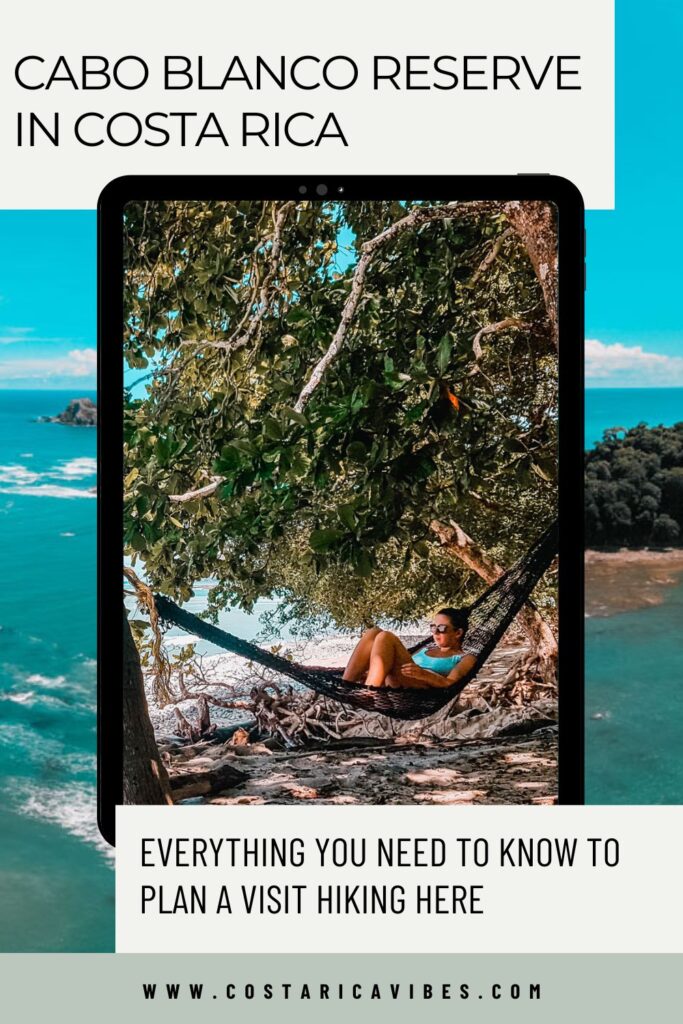
Reserva Natural Cabo Blanco is located on the Nicoya Peninsula of Costa Rica near Montezuma, Mal Pais, and Santa Teresa. This stunning national park is the perfect place to spend the day hiking.
Along the trails, you will see a variety of wildlife and plants. At the halfway point of your hike, you will be treated to a pristine white sand beach with turquoise waters that is only accessible to hikers.
When we first visited Cabo Blanco we were pleasantly surprised by the reserve. However, there were a few things we wish we knew and planned for before visiting.
For example, we were not prepared for the oppressive heat here.
We created this detailed guide to visiting Reserva Natural Cabo Blanco so you can be completely prepared for your visit.
Let’s get planning!
Reserva Natural Cabo Blanco: Important Info
Opening hours.
The Cabo Blanco Reserve is only open from Wednesday until Sunday from 8 am until 4 pm. In other words, it is closed on Mondays and Tuesdays.
It costs $12 per person to enter the reserve. If you are a Costa Rican resident it is around $5 to enter.
From Montezuma just head south. You literally just drive south until you can’t drive any further.
If you are visiting the reserve from Santa Teresa or Mal Pais you will have to head west as though you are heading towards Montezuma and then head south.
There is another road, but it involves a river crossing which is impossible during the rainy season.
We have done it a few times and really don’t recommend trying it, especially with a rental car.
Here is a screenshot so you can see what I mean. You will likely have to take the route highlighted in blue. The other route is the one with the river crossing.
Once you arrive at the entrance to the reserve you still have about a mile more to drive before you will reach the parking lot. This road is a bit rough.
Thomas was about to turn around because he didn’t believe me that the reserve could possibly be down this poorly maintained road.

Adobe Rent-a-Car
- 10% discount for Costa Rica Vibes readers
- Free second driver
- 0% deductible on Liability Protection Insurance
- Excellent customer service
- New fleet of well-maintained vehicles
It is. Just keep going.
Also, just note that this entire area is mostly unpaved. We definitely suggest a car with 4-wheel drive to get around in this area.
↪FIND OUT HOW TO GET UP TO 10% OFF YOUR CAR RENTAL IN COSTA RICA!
If you would like to enter Cabo Blanco Reserve in your GPS or in the Waze app, just search for “Cabo Blanco Absolute Nature Reserve” and the reserve will come up.
There is a parking lot located next to the ranger station which you can use for free. Just be warned, I think they have had some problems with people breaking into cars recently. One of the rangers working told us to leave nothing of value in the car and that they are happy to store anything important in their ranger station.
There were two guys working while we were there and one was paying careful attention to the parking lot, but you never know!
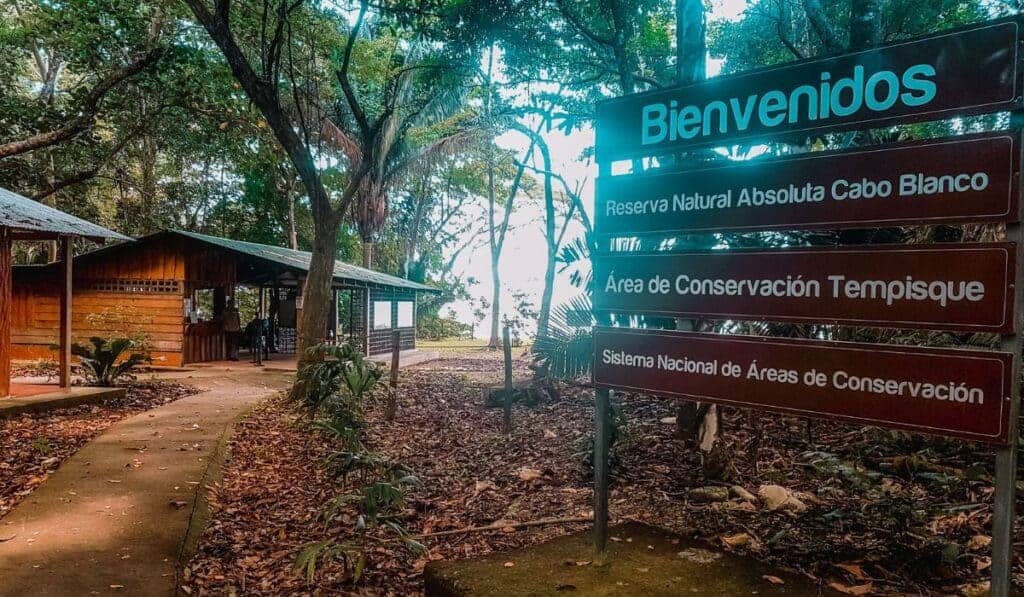
There is a bathroom at the ranger station. There is also a place where you can fill your water bottle with drinking water.
If you hike to the beach there is an outdoor shower and a spot with potable water.
There was no sign at the faucet stating the water was potable, but we asked the head of the Cabo Blanco volunteer program who we happened to meet while we were there. She told us it was drinkable water.
We filled our water bottles from it and didn’t get sick, so it must have been fine!
What to Wear

Shop All The National Park Essentials Here
We both wore sport shorts and cotton shirts.
I suggest wearing shoes like Keens . We wore sneakers and there were a few spots where we had to cross a stream. It was a pain to take our sneakers off every time.
If you can, we suggest wearing your bathing suit under your clothes. You will probably want to go swimming once you arrive at the beach or at least will want to jump under the outdoor shower.
There wasn’t a bathroom for you to change at the beach.
Actually, after the first one I was like “Forget this!” and just walked through all the streams with my sneakers on.
Do You Have Travel Insurance?
Don’t let unexpected medical expenses or trip interruptions overshadow your dream Costa Rican vacation.
Secure your worry-free Costa Rican adventure with Heymondo travel insurance
What to bring
We saw some people just hiking with a water bottle in their hand and Thomas was over there with his huge day pack.
We brought:
- rain jackets (we should have left those in the car)
- the drone (we need cool shots for this site and Thomas is obsessed with it)
- binoculars (I’m happy we brought those)
- three water bottles (we needed those)
- snacks (bring food because once you get to the beach you will be starving)
- SPF 50 sunscreen
Amount of time you need
If you plan on hiking all the way to the beach I would give yourself at least five or six hours.
It took us about two hours to the beach and two hours back.
We spent about an hour relaxing on the beach, but I think we both would have been happy to stay there longer.
Best time to visit
Mid-December through mid-April is the dry season here. It is very unlikely that you will have rain if you visit during that time of year. However, this also means that the reserve could be very full of other tourists. Plus, the temperatures tend to be really hot.
During the rainy season (mid-April through early December) you may experience afternoon rain storms to help you cool down.
Just start your hike early and it should be no problem.
We once visited during early August and were surprised by how good the weather was. The trails were also very dry for the most part.
The biggest downfall is that it was probably a lot more humid than if you visit in the dry season because there had been some rain recently.
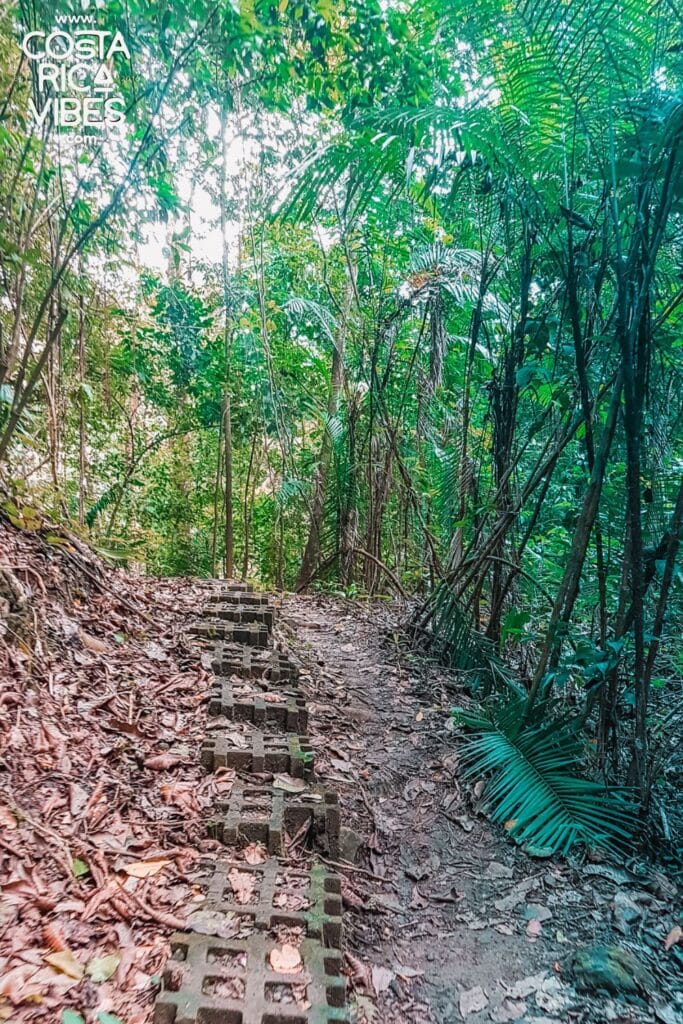
History of Reserva Natural Cabo Blanco
If you are interested in the history of the reserve there are several detailed boards at the start of the hike which explain everything. For now, I’ll give you a brief overview.
In the early 1960’s a Swedish man named Nicolas Wessberg and his Danish wife Karen Mogenson moved to the area.
He was interested in preserving the natural state of the area so he purchased 1,250 hectares of property which he turned into the reserve.
They also purchased the land that is run as a reserve along the beach in Montezuma .
I just found this out while doing some research, but apparently, Wessberg was assassinated in 1975 while showing support for the creation of Corcovado National Park. I’m going to have to do some more research on Wessberg and report back on what I learn.
He was very influential in supporting preserved land throughout Costa Rica and it would be interesting to learn more of his story.
Wildlife at Cabo Blanco
The reserve protects a variety of wildlife and several species of trees in the tropical forest.
Some of the animals you might see include; white-tailed deer, howler monkeys, white face monkeys, coyote, and coatis. If you are really lucky you might get to see margays.
The Cabo Blanco nature reserve also protects a variety of fish marine mammals, and marine birds (including brown boobies and pelicans).
The Hiking Trails at Reserva Natural Cabo Blanco
On the map, you will see that there are two trails that are each one kilometer long which you can turn into a nice little loop if you are looking for a shorter hike. These trails are labeled Danish Trail and Regreso.
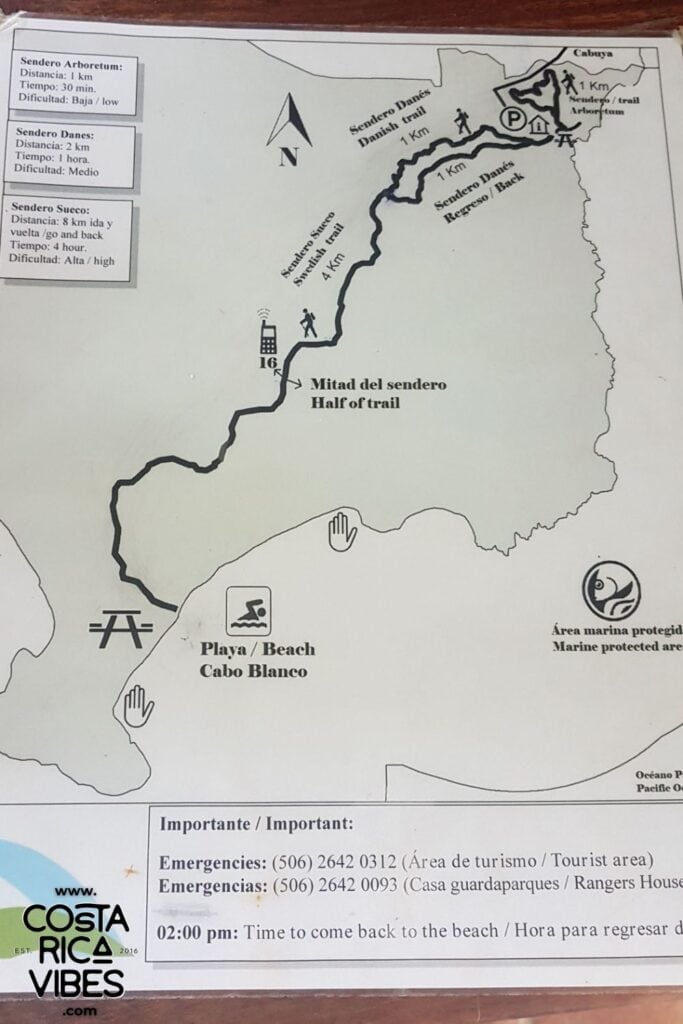
From the end of either of these trails, you can continue on to the beach. It is another 4km (2.4 miles) out to the beach.
This means if you want to go to the beach and back you will be walking 10 kilometers (6.2 miles) in total.
The trails towards the start of the hike were very well maintained. As we got closer to the beach there was more brush blocking the trail in some places.
However, we did meet some nice women who were part of the Cabo Blanco volunteer program. They were in the process of clearing the trails with machetes.
You can expect to see a lot of wildlife along the hike including monkeys, armadillos, anteaters, and coatis.
The Beach at Reserva Natural Cabo Blanco
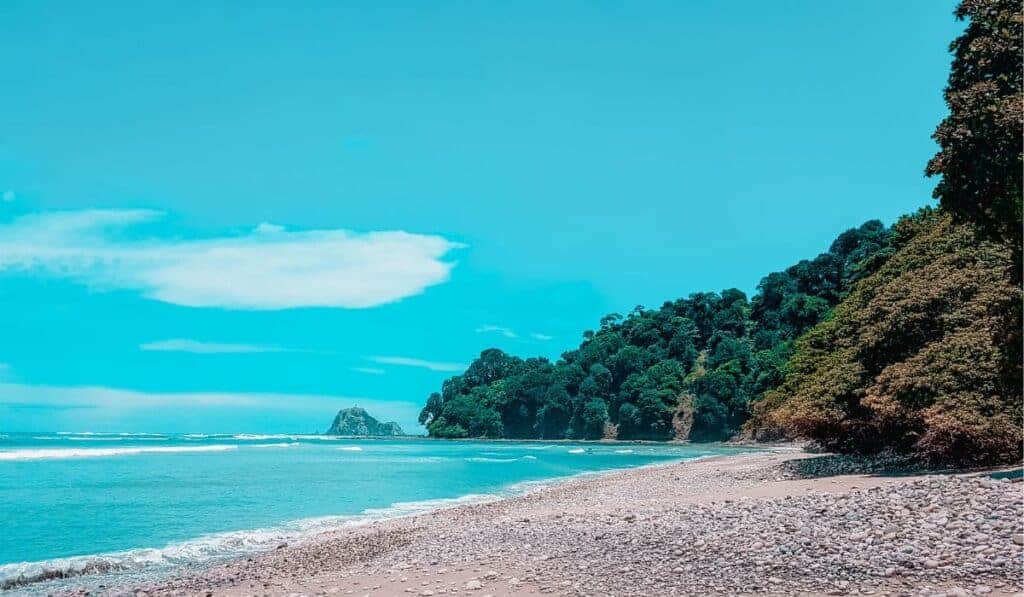
When you (eventually) arrive at the Playa Cabo Blanco on the very southern tip of the Nicoya Peninsula you will feel like you have arrived at paradise.
The beach has a lot of stones in some spots, but it it is the perfect beach to walk (not that you probably want to do any more walking after your hike).
There are several picnic tables, an outdoor shower, and potable water. We also discovered a hammock that is a permanent fixture here. The hammock is located to your right when you get to the beach area.
The water was calm and we saw several people swimming.
Our Experience
I think I have only ever said this one other time on this site and that was in the Nauyaca Waterfall Guide , but guys, this hike was intense! I wouldn’t say it is overly strenuous, but it is just long and so humid.
The first time we visited, we started the hike a bit later than we should have. I think we finally started walking around 10 am.
First off, I need to say that the two guys working at the ranger station were so nice. They were extremely helpful in explaining everything too us. We talked to them in Spanish which is usually a struggle for us, but they talked slowly so that we both understood everything.
The first trail we did was the Danish Trail. We then came to a stream and you better believe Thomas and I were there full on dunking our heads in it.
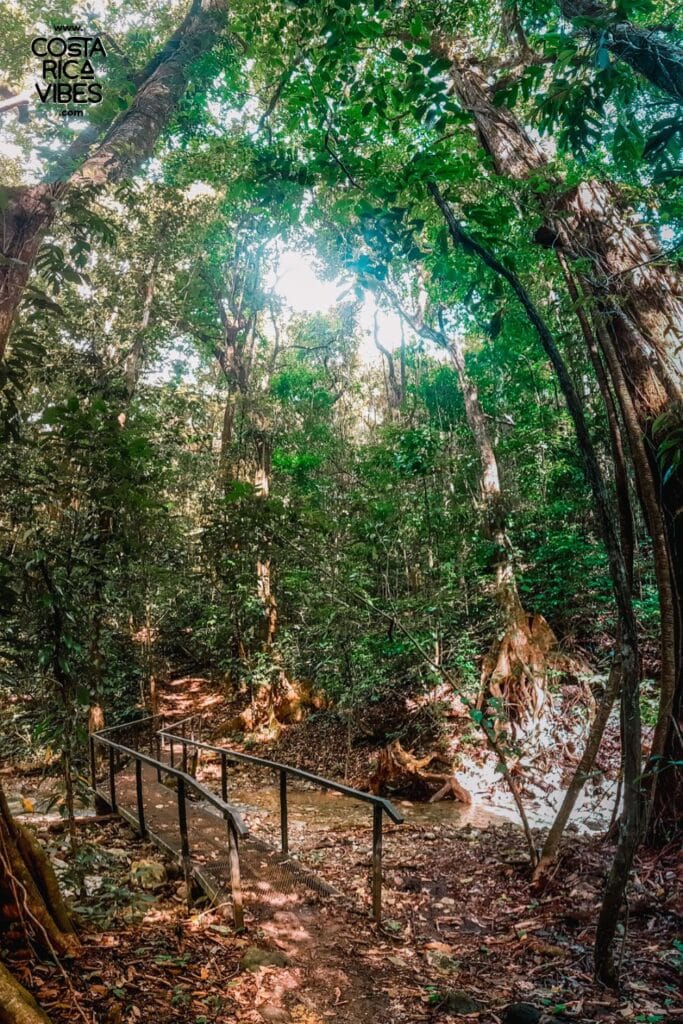
Along this trail, we continued to cross the stream in various parts. We took every opportunity we had to soak our heads. It helped so much.
After one kilometer we came to where the Swedish Trail to the beach starts. At this point, we thought we would only go halfway and then turn around.
This part of the hike was rough! It was almost all uphill.
Luckily every time I thought, “I can’t do this anymore. I’m turning around” the trail would even out for a bit.
Once we got to the middle part of the trail it started to go downhill. We decided we had come that far, we could make it to the beach. The second two kilometers on the Swedish trail were mostly downhill.
We were so ready to just sit when we arrived at Playa Cabo Blanco. It was nice to be greeted by an outdoor shower and drinkable water.
You better believe I took my shoes off and jumped immediately under that shower.
We then found a picnic table to hang out at for a while. Thomas flew the drone and I chilled out for a bit.
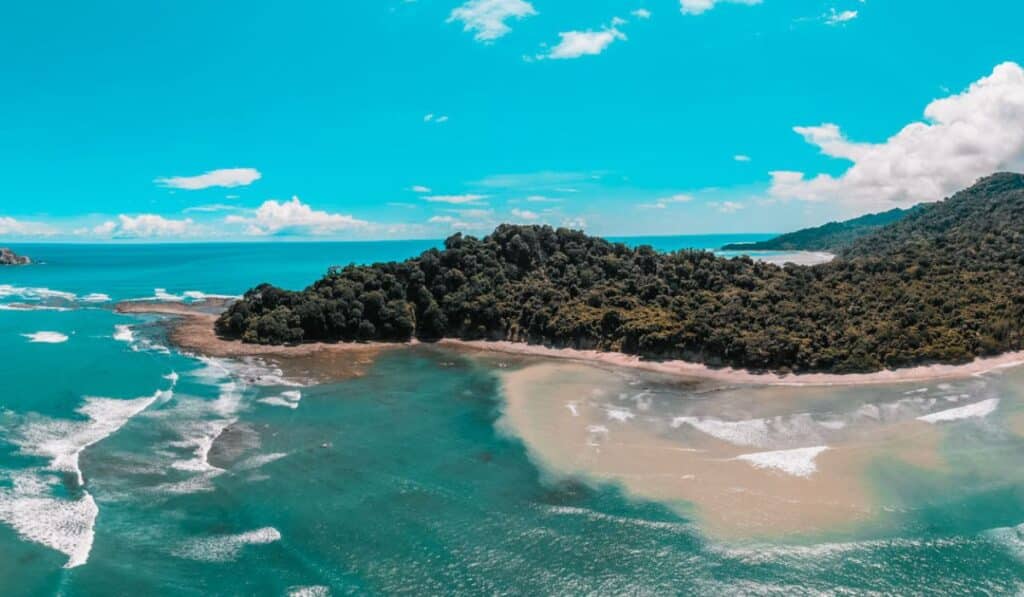
We could have stayed at that beach all day, but after about an hour we started to head back so we could get back before the reserve closed for the day. The hike back seemed so much easier!
We ended with the Danes Trail to get a little variety on our trip.
Helpful Tips for Visiting Cabo Blanco Costa Rica
– Start your hike as early in the day as possible. It gets hot hot hot! Plus they told us at the ranger station that we needed to head back from the beach by 2 pm to get back by 4 pm when the reserve closed. If you want ample beach chilling time you will need to start early enough.
– They will not give you a paper copy of the map at the ranger station, but there is a nice laminated copy you can look at before you start hiking. Make sure you bring your phone and take a picture of the map before you start your hike.
– These are listed on the map, but just as a backup, there are two emergency number you should be aware of during your hike. You will be a bit remote and it is good to have these numbers just in case.
The number for the tourist area: (506) 2642 0312
The number for the ranger house: (506) 2642 0094
– If you are interested in spending an extended period of time in the area, the Cabo Blanco Reserve is always looking for new volunteers. For more info, you can email the head of their volunteer program at: [email protected]
What to do After Visiting Reserva Natural Cabo Blanco
If you are heading back to Montezuma, we suggest stopping at the Cabuya cemetery on your drive back. It will be about ten minutes into your drive on the right side of the road.
This cemetery is only accessible during low tide, so you will have to try and time things out correctly.
Also, definitely look out for the giant Banyan tree on the left side of the road. This is about 15 minutes into your drive. You can pull your car off onto the side of the road to check it out. It’s definitely a cool sight!
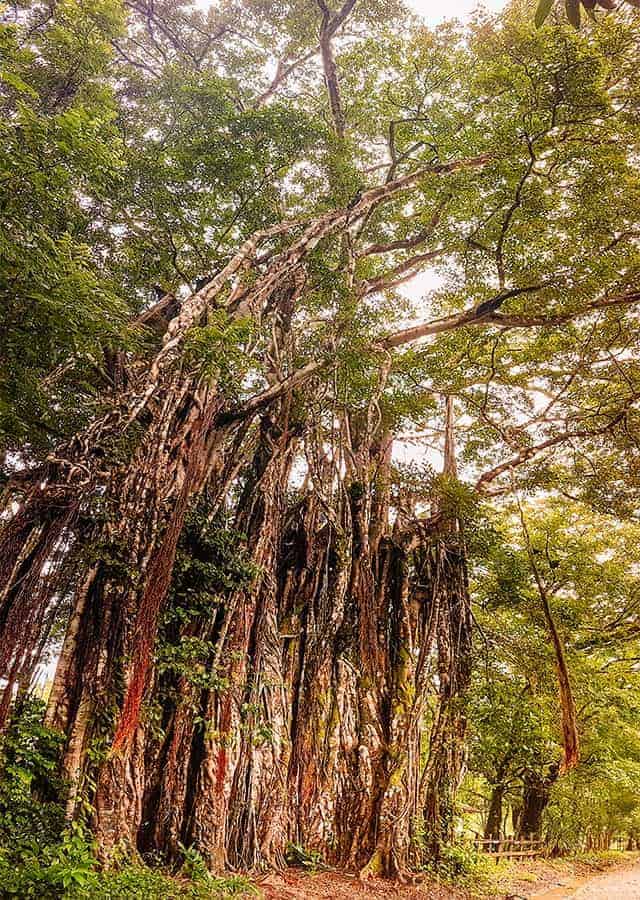
If you do the entire hike you will likely be so hot after. All we could talk about for the last 45 minutes of our walk was which cold beer we were going to order at Butterfly Brewing Company .
This awesome craft beer spot is located in Montezuma and is home to some of our favorite craft beer in Costa Rica. They also serve tasty food.
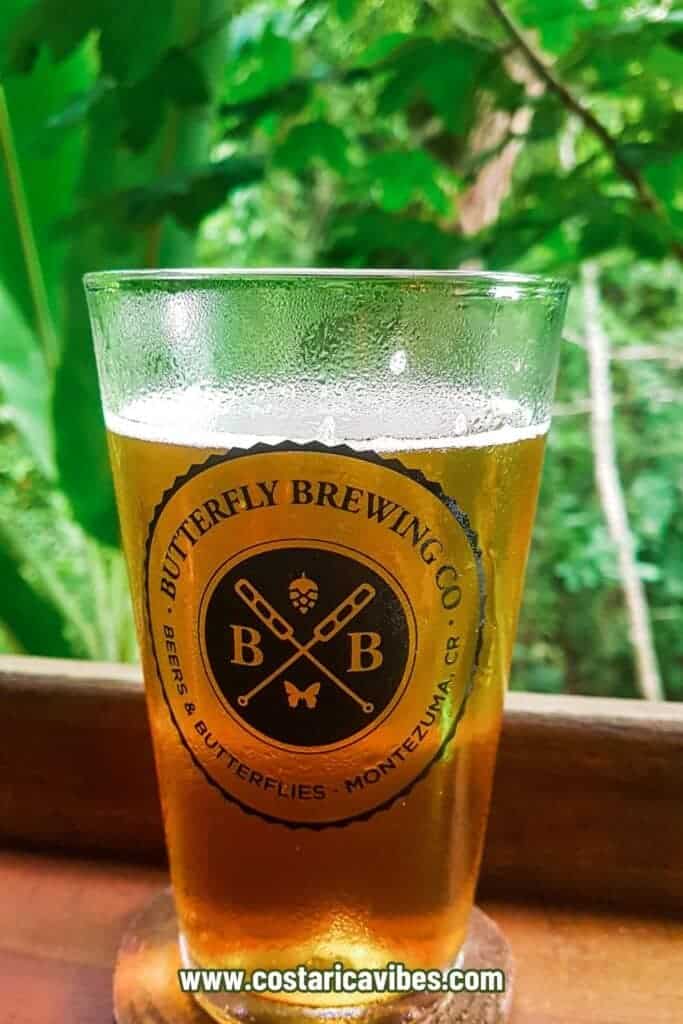
For more ideas, check out our complete guide to the Montezuma area .
Hopefully, this helped you out in planning your visit to Cabo Blanco Reserve. Let us know if you have any questions in the comment section below. We are always happy to help you out!
You Might Also Find These Posts Helpful:
Ferry from Puntarenas to Paquera: Schedule and How to Guide
Costa rica’s blue zone – the place people live to over 100 years old, montezuma beach – walk for hours along pristine shores, montezuma waterfalls in costa rica: the best ways to visit, curu wildlife refuge in costa rica: a flora and fauna paradise, cabuya island cemetery in costa rica: unique place to visit.
Costa Rica Travel Details : What You Need to Know
🚗 Should I rent a car in Costa Rica?
Having a rental car will give you the most flexibility when traveling in Costa Rica. This will also allow you to take fun day trips on your own.
- Save 10% Plus Other Perks with Our Adobe Rental Car Discount
- You might also consider; shared shuttle services or private transfer services
🏄🏽 How can I book things to do?
We find that Viator tends to have the most comprehensive selection of activities with secure booking and good cancellation policies.
🍍 I’m overwhelmed with planning. Can you help?
Of course! I suggest joining our Facebook group for specific questions and head to our Start Here Page to get started planning.
✈️ What is the best way to book a flight?
Usually, we have the best luck finding great prices with Skyscanner . Check for flights to both San Jose Airport (SJO) and Liberia Airport (LIR).
🛏️ What is the best way to book my Costa Rica hotels?
We highly suggest Booking.com for hotel bookings and typically use VRBO for Costa Rica vacation rentals.
🗣️ What is the main language in Costa Rica?
The main language in Costa Rica is Spanish. Most people working in tourism speak at least some English.
💰 What is the currency in Costa Rica?
The currency used in Costa Rica is the Costa Rican colón (CRC). However, the US dollar is widely accepted in most tourist areas
📞 What is the best way to stay connected?
An eSIM from Airalo is the easiest way to get 4G data while traveling in Costa Rica.
🌴 Is Costa Rica safe?
Generally, Costa Rica is considered safe for tourists. However, like any travel destination, it’s best to use caution and be aware of your surroundings.
🛂 Do you need a passport to go to Costa Rica?
Yes, Costa Rica is its own country. You will need a passport to visit.
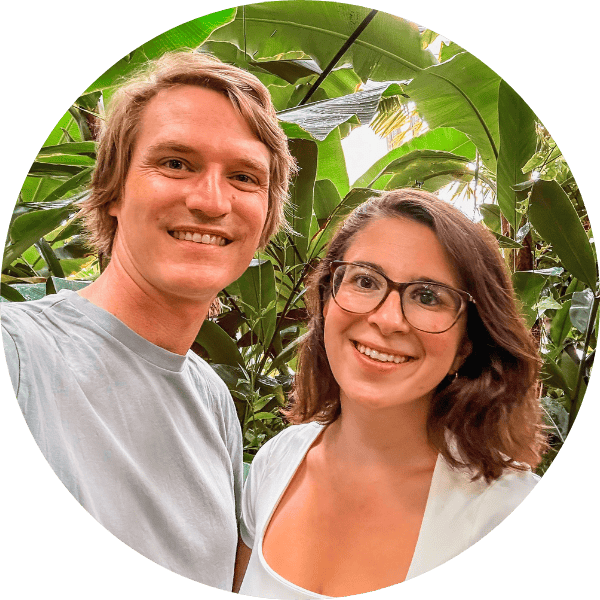
Hi! We’re Thomas (the German) and Sarah (the US-er)
We met in Virginia, moved to Germany, and since 2016 we have lived in sunny Costa Rica. It was a spontaneous decision to move here, but it was the best decision! Now we spend our days roaming the country to bring you the very best in Costa Rica travel here on Costa Rica Vibes. Sarah is the writer. Thomas is the one keeping it all together. Want the whole crazy story?

Sarah McArthur
Sarah McArthur is the co-founder and main writer of Costa Rica Vibes. She is originally from the United States but has lived in sunny San Jose, Costa Rica since 2016. She has traveled all over the country and now considers herself a self-proclaimed Costa Rica travel expert. Want the whole crazy story?
Leave a Reply Cancel reply
Your email address will not be published. Required fields are marked *
Cabo Blanco Nature Reserve: Costa Rica’s First National Park
This post will share everything you need to know about visiting the Cabo Blanco Nature Reserve, the first ever protected area in Costa Rica. We’ll cover the trail options, wildlife and important visitor info.

This article may contain affiliate / compensated links, that may earn me a small commission, at no extra cost to you. For full information, please see our disclaimer here . While all efforts have been taken to ensure the information included in this post is correct and current, travel information such as opening hours, business operations and prices change frequently. If you find anything in this post that is incorrect or outdated please let me know in the comments so I can update it for other readers.
Table of Contents
About the Cabo Blanco Nature Reserve
Located at the southern point of the Nicoya Peninsula in the tiny town of Cabuya, the Cabo Blanco Nature Reserve (Reserva Natural Absoluta Cabo Blanco) is a protected area offering jungle hiking, remote beaches and plenty of wildlife.
The reserve spans a land area of 1,373 hectares (3,393 acres) and a marine area of 1,688 hectares (4,171 acres), housing a huge variety of animals, birds, marine life and native flora.
There are three trails, but the most common is the lengthy 10 km / 6.2 mi Sueco Trail, which leads to the remote and untouched Playa Cabo Blanco.
Within easy reach of Montezuma and Santa Teresa / Mal Pais, spending a day hiking the trails of the Cabo Blanco Nature Reserve is a must-do in the area.

History of the Cabo Blanco Nature Reserve
The Cabo Blanco Nature Reserve is a very special place in Costa Rica and plays a significant and meaningful part in the country’s conservation ethos.
Cabo Blanco was the country’s first ever nature reserve, preserving a piece of primary forest for conservation purposes.
A Swedish man, Nicolas Wessberg, came to Costa Rica in the 1960s with his Danish wife Karen Mogenson, in search of a life in harmony with nature.
After purchasing a parcel of land on the coast of Montezuma (which nowadays is the Nicolas Wessenberg Nature Reserve that you will pass if you hike to Playa Cocalito and El Chorro Waterfall ), Nicolas travelled to Cabo Blanco to search for seeds to grow more native plants on their farm.
At this time, the Costa Rican government was encouraging locals to clear the area of forest, in order to have productive agricultural land. The reward for clearing a parcel of forest was that you were awarded ownership of the land.
Nicolas realised how biologically diverse this area was, and with the help of international conservation organisations, he purchased the land. He urged the Costa Rican government to declare the area as protected, to avoid further destruction.
In 1963, the Reserva Natural Absoluta Cabo Blanco was created, the first national park in Costa Rica. The ‘absoluta’ means absolute, and initially, the area was preserved absolutely for nature, with access only permitted to scientists.
The reserve has since been opened up to visitors, albeit in a controlled way, and the Cabo Blanco Nature Reserve has paved the way for Costa Rica’s strong commitment to the conservation and preservation of nature. The network of national parks across the country all started here!
The two main trails in the park are named in their honour. The Sendero Danes or Danish Trail for Karen, and the Sendero Sueco or Swedish Trail for Nicolas.
Nicolas Wessburg was actually assassinated in the Osa Peninsula, whilst advocating for the creation of the Corcovado National Park . It’s a crazy story, and we learned more about it during our tour of the park. Corcovado is now the largest and most important national park in the whole country, and considered the most biologically intense place on earth – I’m so glad he fought for it.
You can read more about the important work of Nicolas and his wife Karen here .

How to get to the Cabo Blanco Nature Reserve
Although the park spans the tip of the peninsula, there is only one access point for visitors. At the ranger station just past the small town of Cabuya, here .
There is a large car park right next to the ranger station that is free to use if you’re driving.
From Montezuma
It’s an easy 30-minute drive from Montezuma. You just drive straight down the main road until it ends at the reserve. Plug this location into your map. The roads are partly dirt, but you don’t need a 4×4.
If you don’t have a car, Montezuma is the easiest jump-off point to get to the park via bus. Buses leave from the bus stop in town, and are bound for the town of Cabuya, but will take travellers near to the entrance of the park. Expect to pay around 1,200 Colones per person (~$2 USD). The ride will take about 50 minutes.
Montezuma – Cabo Blanco
Cabo Blanco – Montezuma
I found these times from this semi-recent review on Google Maps . The schedule differs depending on the day of the week. On the days the park is open there is a consistent morning bus at 8:20 am which I would recommend, and a consistent return bus at 3:30 pm. Pop into the bus stop the day before your visit, to triple-check the latest times.
From Santa Teresa / Mal Pais
There are two possible routes to drive from Santa Teresa/Mal Pais to Cabo Blanco.
If you’ve got a 4×4, or it’s the dry season and you’ve got a relatively high clearance SUV, you can take the quick route past Mal Pais. We did this and had no problem. They are dirt roads, but in the dry season, there were no real rivers to cross. This route is the quickest, around 40 minutes.

Otherwise, you’ll need to head north to Cobano, into Montezuma and approach from there. This route takes approximately 1 hour.

Although it’s possible to take the bus from Santa Teresa to Cabo Blanco, I wouldn’t recommend it.
You’ll first need to get to Montezuma, which involves a bus from Santa Teresa to Cobano, where you’ll change to a Montezuma-bound bus. Then you’ll connect with the bus from Montezuma to Cabuya as above.
This is likely to take upwards of 4 hours. I don’t think you’d have enough time in the day to hike as well.
If you can’t dedicate a few nights in Montezuma to your itinerary (it’s sooo much better than Santa Teresa!), I would instead recommend taking a tour.
They’re not cheap, but unless you have your own vehicle, this is the only realistic way to have enough time at the reserve to do the hike and get back in one day.
Selina runs a tour , and I also found an option with local tour company Manakin Tours , who seem to specialise in wildlife and nature-based experiences. There are plenty of other tour operators around Santa Teresa advertising different excursions to Cabo Blanco.
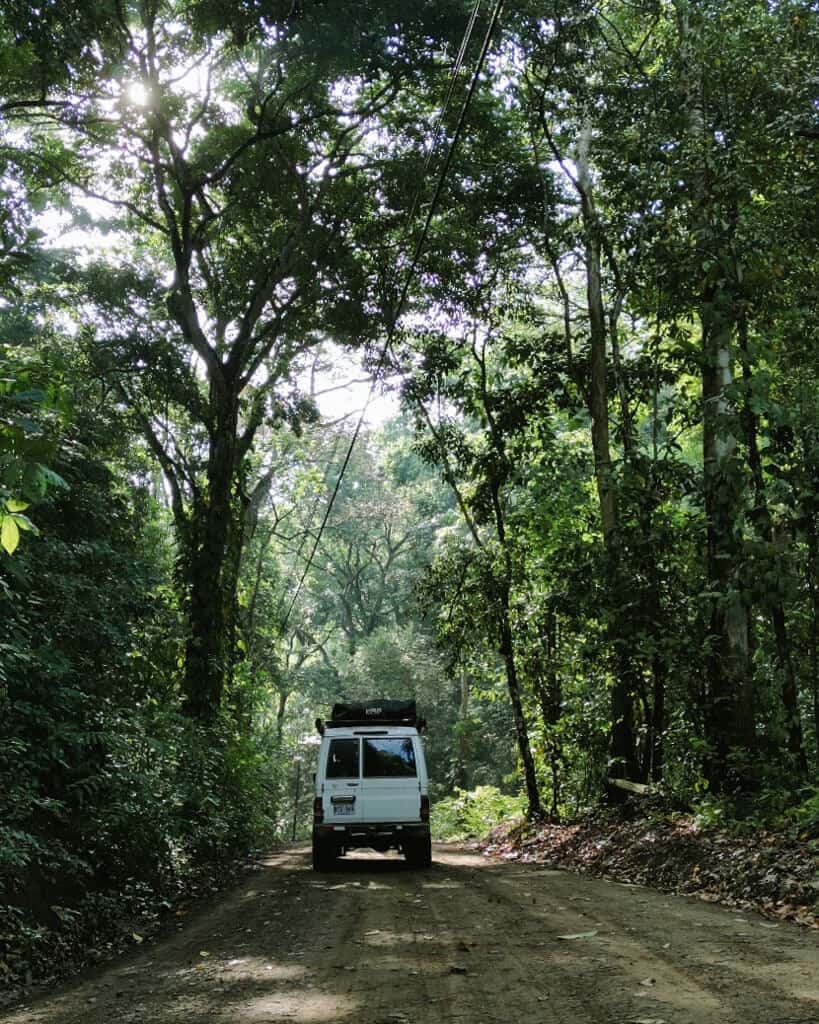
Visiting the Cabo Blanco Nature Reserve
Opening hours.
The Cabo Blanco Nature Reserve is open from Wednesday – Sunday from 8 am – 4 pm. It is closed on Monday and Tuesday giving the park and wildlife a day to rest.
Although the park closes at 4 pm, if you are planning to hike to the beach, you should arrive by 11 am, to ensure you have enough time to get there and back. You need to leave the beach no later than 2 pm.
Entrance fee
The entrance fee for foreign visitors is $12 USD + 13% IVA tax, which equates to around $13.56.
Kids from 6 – 12 are $5 + tax, and kids under 5 are free. Locals have different prices.
You are encouraged to pay by credit card, but I believe you can also pay in cash in USD or Colones.
Hiking in Cabo Blanco Nature Reserve
There are only three trails inside the Cabo Blanco Nature Reserve, so it’s pretty easy to plan your day.

You can choose to do a short jungle loop, the Danes Trail, or hike all the way to Playa Cabo Blanco and back, the Sueco Trail. The Sueco Trail connects with the Danes Trail. There is one additional trail near the ranger’s office, the Arboretum Trail.
All the trails are clearly defined, but natural, jungle style. There are rocks, tree roots and uneven sections. The trails are quite steep in parts, and if it’s particularly uneven, there are some concrete pavers to assist.
There are a few small rivers to cross, most of which have make-shift bridges from wooden planks. In the dry season, it’s nothing more than a trickle, but in the wet season, they can be more substantial.
Something to be aware of is the incredibly oppressive heat. I love warm weather, but both Brayden and I were absolutely cooking. The type of forest and the generally higher temperatures of the Nicoya Peninsula combine to make this one sweaty hike. It’s a far cry from the moist and cool cloud forests of Monteverde , so please be prepared!

Sendero Arboretum / Arboretum Trail
- 🧭 Distance – 1 km / 0.6 mi
- 🥾 Trail type – loop
- 🔋 Difficulty – easy
- ⏰ Time needed – approximately 30 minutes
The Arboretum Trail is a short loop in the opposite direction of the ranger station. We didn’t do this, and I can’t specifically remember what this trail is about, but from memory, it is designed to showcase the large range of trees and plants in the reserve.
My understanding is that the loop trail is flat on a relatively even surface. If you have mobility issues or kids, this is a good one. You might like to combine it with the Danes Trail for a lengthier hike, but still not as long or as strenuous as the Sueco Trail.
Sendero Danes / Danish Trail
- 🧭 Distance – 2 km / 1.2 mi
- 🔋 Difficulty – easy – moderate
- ⏰ Time needed – approximately 1 hour
If you’re not up for a big walk, or you’ve got kids in tow, Sendero Danes is probably the best choice for you. It gives you a taste of what you can expect on the Sueco Trail, as both connect, without needing to commit to an all-day hike!
Starting from the entrance, this is a 2 km / 1.2 mi looping trail. You’ll experience the tropical forest of the area and have a good chance of spotting some wildlife like monkeys or deer.
Most of this trail is pretty flat, but there are a couple of steep inclines and declines to tackle.

Sendero Sueco / Swedish Trail
- 🧭 Distance – 8 km + 2 km (Danes Trail) = 10 km total / 5 mi + 1.2 mi (Danes Trail) = 6.2 mi total
- 🥾 Trail type – out and back
- 🔋 Difficulty – moderate – challenging
- ⏰ Time needed – 4 – 5 hours with time at the beach (combined with the Danes Trail)
The real hero of the Cabo Blanco Nature Reserve is the Sueco Trail. If you’ve got the time and energy, it’s worth tackling this hike.
Branching off from the Danes Trail, this trail is 8 km / 5 mi on its own, combined for a total of 10 km / 6.2 mi return trip from the ranger station.
The trail leads to Playa Cabo Blanco, a remote beach only accessible via hiking or boat. It’s the perfect halfway point of the hike, giving you the chance to swim and rest, before turning back.
The first part of the hike on the Danes Trail is relatively flat, but gradually starts to incline once you reach the Sueco Trail. There are some pretty steep sections that had us sweating and puffing.
The trail peaks around 2 km / 1.2 mi into the Sueco Trail, and then you start the sharp decline to the beach. This is a killer coming back up again.

The Sueco Trail shouldn’t be underestimated! We found it quite challenging, with the long distance, intense heat and steep inclines.
We were rationing our water before we even arrived at the beach, and ran out on the way back. By the time we got back to the ranger station, we were parched and desperate for water. We met a couple of other travellers who had already run out before even reaching the beach, so please bring more than you think you’ll need.

Playa Cabo Blanco
The Sueco Trails leads to the Playa Cabo Blanco. Accessible only to those who tackle the challenging hike, the beach is raw and wild.
The island you’ll see offshore is the namesake of the reserve. Cabo Blanco means white cape in English, and the Spanish named the area as such because the rocky island was always covered in white guano from all the seabirds that lived there.
There isn’t a lot of soft sand to lay down your towel, as the beach is mostly made up of large pebbles. It makes a beautiful sound with the waves crashing over it.
When we visited, the waves were seriously strong, and combined with the pebbles thrashing around, it wasn’t ideal for a swim. But we had a quick dip to cool off and it was lovely. From what I can see, it isn’t always that rough, and I think it was high tide when we visited so that probably made it worse.
There are plenty of shady trees lining the shore to sit and rest. Bring a picnic lunch or some snacks to reward yourself at the beach.
There aren’t any toilets or change rooms at the beach. But there are some outdoor showers which were incredible to rinse all the sweat and salt off.
Obviously, this was fresh water, but there was nothing to indicate it was safe to drink. We didn’t take our chances, but with a filtration bottle, you could probably refill it here.

Wildlife inside the Cabo Blanco Nature Reserve
There are so many different kinds of animals and birds that live inside the reserve, although some are more elusive than others.
One species that we saw a lot of here and not really anywhere else in Costa Rica was the white-tailed deer. They were everywhere in the forest, and we were so lucky to have a very cute encounter with a baby and its mum. We came across them on the trail and after carefully stopping a few metres away, they hung around for a while and weren’t scared of us.

We heard howler monkeys throughout our whole hike but didn’t get a great look at any. There are also white-faced capuchin monkeys around too.
We saw a couple of agoutis foraging on the forest floor, and a coati ran across our path at one point.
There is a lot of different birdlife, and this was the first time we got a good look at a lineated woodpecker. There was a family with a mum and two adolescents pecking away. The younger ones were so sweet trying to peck at the bark, but not making a whole lot of progress with their small and untrained beaks!
We saw a male and female pair of great curassows, and out on the coast, there is a range of seabirds like pelicans, frigate birds and boobies.

One thing we will always associate with Cabo Blanco Nature Reserve is land crabs. These crazy red and purple critters are all over Costa Rica, but our hike here was the first time we had encountered them.
There were thousands, and I mean thousands of crabs on the forest floor. They are constantly moving around, making scuttling noises in the leaf litter. It took us a while to realise what they were, and we were worried they were snakes! Once you see them, they are everywhere you look. They’re very funny to watch, getting defensive with their pincers in the air if you get near them. If they just sat still you wouldn’t even notice them, but instead they’re scuttling around like crazies!

A lot of people say there are felines and big cats living inside the reserve, like jaguarundis, margays and even pumas, but it’s almost impossible to see them.
If you’re very lucky you may also spot an anteater, an armadillo or a paca (a rodent-like creature similar to an agouti).
Amenities at the Cabo Blanco Nature Reserve
At the ranger station at the entrance, there are toilets (you could change in here if needed) and taps with safe drinking water to fill up your bottles.
Once you start the hike, there are no other amenities.
There is an outdoor shower at Playa Cabo Blanco to rinse off the salt water, but I don’t believe this water is safe to drink. There are no bathrooms at the beach.
What to wear
Cool and comfortable clothes. It is insanely hot! Thankfully the trail is shaded most of the way, but don’t forget a hat and whatever other sun protection you use.
In terms of shoes, runners, hiking boots or hiking sandals are fine. The trail is steep and slippery in parts.
I would suggest wearing your swimmers or getting changed at the entrance as there is nowhere to get changed at the beach. Even if you don’t swim in the ocean, you’ll most likely want to have a rinse-off in the showers!

What to bring
This hike is long, hot and remote, so you need to come prepared!
- 🥾 Comfortable walking shoes – if you prefer hiking boots or runners, great. If you’ve got hiking sandals that you’re comfortable in, they can also work.
- 🩳 Lightweight hiking clothes – it is going to be seriously hot!
- 👙 Swimwear – I would suggest wearing it, as there aren’t any changing rooms at the beach.
- 🧖🏽♀️ Towel – for sitting on at the beach and drying off after a dip or shower.
- 🎒 Waterproof bag – to be prepared in case of rain. It can rain anytime in Costa Rica!
- 🌞 Sunscreen – reef friendly! A hat, sunglasses and a t-shirt aren’t a bad idea for sun protection either.
- 🦟 Insect repellent – I don’t recall the bugs being particularly bad, but you are in the jungle.
- 💧 Water – and LOTS of it! Minimum two litres per person if you’re hiking both ways. It is HOT and you will go through it very quickly.
- 🍍 Snacks – bring plenty of snacks or a picnic lunch. Fruit, lollies, chips, energy bars, sandwiches etc. you’ll need lots of fuel and a reward at the beach. There is nowhere to get food on the trail.
Where to stay in Montezuma
Being the closest jump-off point to the Cabo Blanco Nature Reserve, with a lovely laidback local vibe, we highly recommend spending a few days in Montezuma!
Montezuma hosts some fantastic accommodations, all exuding the chilled vibes and friendly nature of the town. There are great options at all price points. Here are some of our favourites:
- $10 USD + per night check prices and browse photos here
- $30 USD + per night check prices and browse photos here
- $70 USD + per night check prices and browse photos here
- $80 USD + per night check prices and browse photos here
- $150 USD + per night check prices and browse photos here
Where to after Cabo Blanco Nature Reserve?
If you’re hanging around in Montezuma, there are plenty of other great things to do! The Montezuma Waterfalls are a set of three waterfalls near the centre of town. If you’re up for another lengthy hike, on the beach this time, we recommend visiting Playa Cocalito and El Chorro Waterfall , where you’ll pass by the Nicolas Wessberg Reserve.
The Cabo Blanco Nature Reserve is a wonderful and underrated national park in Costa Rica. Enjoy a lengthy hike through dense tropical forests, a secluded beach and tons of wildlife for a cheap price without the crowds. Add it to your Nicoya Peninsula itinerary!
More Montezuma guides
- Things to do in Montezuma
- How to visit the Montezuma Waterfalls
- How to visit Playa Cocalito and El Chorro Waterfall

Sally Rodrick
Sally Rodrick is the voice behind Sally Sees. She has spent 12 months travelling in Mexico and Central America, and has her sights firmly set on South America. Sally helps thousands of readers discover the magic of Latin America. Sharing detailed guides to inspire and equip them with the knowledge they need to plan their own epic adventures in this incredible part of the world.
Leave a Comment Cancel Comment

Costa Rica Guide
Travel information and maps, cabo blanco absolute nature reserve.
Cabo Blanco Absolute Nature reserve protects semi dry tropical forest on the southern tip of the Nicoya Penisula, Costa Rica. The 2 mile long (3 km) trail crosses a ridge and drops down to Playa Banco on the tip of the Nicoya Penisula.
The visitors entrance to Cabo Blanco is on the east side of the Peninsula near Cabuya, south of Montezuma. Open 8 am – 4 pm Wednesday through Sunday (closed Monday and Tuesday) Access on the western side of Cabo Blanco Absolute Nature Reserve (Reserva Natural Absoluta Cabo Blanco) is restricted to the tiny but strikingly beautiful Playa Cuevas. There are no public trails from this entrance.

Tiko Tours – Viví Santa Teresa

5 HOURS HIKING IN CABO BLANCO
A favorite of nature and hiking lovers, this tour through the Cabo Blanco Absolute Reserve is of medium grade, so you must be in strong physical condition and in good health. The tour is approximately 5 hours through the forest from the main entrance to the beach.
During the tour it is possible to see monkeys, coatis, deer, raccoons and other animals common to the area.
The primary forest here is unique and beautiful. Entering this special reserve gives us the opportunity to reconnect with ourselves, and having the opportunity to breathe fresh air is simply spectacular. Once we arrive at the beach, we will rest for about an hour where snacks and drinks are provided. Taking a refreshing swim in the ocean here is perfect after the hike.
After the break we’ll return along the same path to reach the main entrance of the reserve.
WHAT’S INCLUDED
Naturalist and certified guide and snacks.
General requirement
Very good physical condition and good health.
What to bring?
Closed shoes, water, sunscreen, swimwear and mosquito repellent.
For the rainy season it is recommended to wear a poncho or waterproof layer.

190$ (65$ each extra person - Children <12 years old : 40$) VAT not included

- Wear comfortable clothes, closed-toe shoes, a swimsuit, take a towel, insect repellent and water.
- You must be physically fit and in good medical condition.
- If you need transportation, please contact Tiko Tours .

- Home Canopy Reserve Contact
Canopy Tour Mal Pais, Costa Rica
The mal pais canopy tour is based in the quiet village of malpais, on a farm with more than 200 different tree species, at the entrance of the cabo blanco absolute nature reserve. the whole area is surrounded by rich tropical forest and diverse wildlife as well as many birds. come and journey through the treetops, enjoying the tropical forest while the pacific ocean lies below you. the exciting canopy ride is nearly a mile long and has 11 platforms set high in the gigantic trees. steel cables connect the platforms which are between 5 and 30 meters in height. you will not forget the experience of flying along our 300 meters long shot over a canyon between the second and the third platform, or the incredible 500 meters long ride through the jungle along a creek. this canopy tour in costa rica have professional nature guides that will accompany you on the unforgettable journey through the biodiversity of the environment. they will introduce you to the fascinating secrets of the forest.following the strictest safety norms, you will enjoy thrilling views of the pacific ocean and of the forest from many different perspectives. duration: about 1 hour 15 minutes. cost: $65 + iva tax..

Check out more photos on

Canopy Tour Reservation
Leave this empty:
You can also reserve by phone to (506) 2640-0360 or click here and message me on whatsapp
Contact canopy tour, you can also contact us by phone to (506) 2640-0360 or click here and message me on whatsapp, canopy tour location.

Email: [email protected] Telephone: (506) 2640 0360 Canopy Mal Pais 2018

- Privacy Policy
- Terms of Service
- Montezuma Rentals
- Snorkeling Map
- Surfing Map
- Birdwatching
- Canopy Tour
- Horseback Riding Tours
- Rock Climbing
- Scuba Diving
- Sea Kayak Tours and Rentals
- Sportfishing
- Tour Agencies
- Delicias and Montezuma Map
- Santa Teresa
- Paquera Area Map
- Conservation
- Cabo Blanco Detailed Map
- Cabo Blanco Satellite Photo
- Caletas-Ario Wildlife Refuge
- Curu Park and Beach
- NIcolas Wessberg Absolute Reserve
- Romelia Wildlife Refuge
- Bat Caves Wildlife Refuge
- Restaurants
- Real Estate
- Southern Nicoya Peninsula Map
- Gulf of Nicoya
- Tortuga Island
- Land Animals Wildlife Guide
- Ocean Wildlife Guide
- Costa Rica Amigos
- Eco Communities
- Real Estate Friends
- Beaches Map of the Southern Nicoya Peninsula
- Best of Montezuma Map
- Cabo Blanco Park Map
- Montezuma Coast Map
- Montezuma and Delicias Area Map
- Montezuma Town Map
- Paquera Coast and Islands Map
- Plano Regulador – Cabuya
- Plano Regulador – Montezuma
- Montezuma Downtown Plano Regulador
- Surf Spots Map
- Driving Directions
- Rental Cars
- Shuttle/Transfer Van
- Taxi Boat Jaco/Montezuma
- Local Flights
Cabo Blanco National Reserve and Park
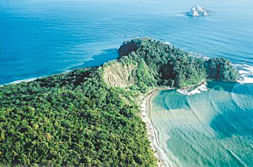
Two basic ways to enjoy the park:
Short Trail Loop: The first is to park at the ranger station on the Cabuya side and then hike around the loop across trails and bridges through the canopy. Most of this has grown back within the last 50 years or so since Cabo Blanco was founded. There are signs detailing the types of tree, etc.
Beach Hike: The hike to Playa Cabo Blanco take around two hours, and is quite strenuous. You’ll climb several hills in tropical conditions, without much airflow. Luckily the jungle canopy provides good shade. The beach isn’t the prettiest, but it’s remote and few people make it this far. It’s fun to explore around the edges of the beach and see a truly remote site. This hike isn’t for the weak… it’ll be a total of four hours of serious hiking to make it there and back.
If your goal is to see animals, you’ll want to be the first people on the trail in the morning at 8am.
Basic Details about Cabo Blanco:
Size: 1270 Hectares (3138 acres) + 1788 Ha (4420 acres) Marine Reserve Founded: October 21, 1963 Hours: Wednesday through Sunday, 8am – 4pm Admission Price: $10 Cabo Blanco Phone Number: +506 2642-0093 Email: [email protected]
Map of Cabo Blanco National Park
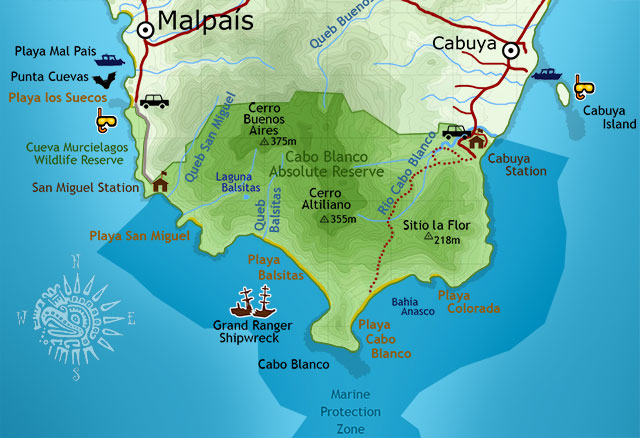
Small map of Cabo Blanco Reserve
Click here to see a bigger better Cabo Blanco Park Map
San Miguel Research Station:
Cabo Blanco Park’s San Miguel Biological Research Station The San Miguel Biological Station was developed to support and promote research and environmental education. The site has well protected tropical marine and dry tropical forest habitats. The facilities include laboratories, classrooms and a reference library. Bunk-bed lodging with electricity, shared rooms and baths are available for groups of up to 30 people. For more information call (+506) 2645-5277 or 2645-5890. The station is available for students, researchers, and any group interested in learning about or experiencing these diverse, fascinating and increasingly threatened ecosystems.
Shipwrecks in or near the park
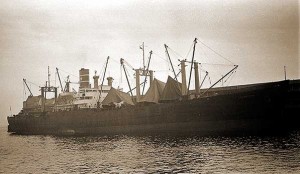
The merchant ship “Ocean Joyce”, later known as the “Grand Ranger” before being shipwrecked.
Grand Ranger Shipwreck off Cabo Blanco, Costa Rica
The second wreck within the park is a 150 year old boat of unknown name, found off Playa Cabo Blanco.
The third is the Caroline Star, which is the only one of the three that you can visit, since it’s outside of the park’s forbidden waters, located just north of Cabuya Island.
More Details about Cabo Blanco National Park:
Cabo Blanco Reserva Absoluta was the first National Park/Reserve in Costa Rica. Since the mid 1960’s, at which time it was mostly cattle land, Cabo Blanco has been a “Reserva Absoluta” meaning that no people other than the park’s stewards, were allowed inside, which has given the park over 40 years to grow back.
Most of the park is thus secondary growth, and was seeded by birds, bats, and other natural means, although early conservationists in the Montezuma area had also planted thousands of trees in the park to help it re-grow.
Most of the park is still protected, but there is an overland trail to the remote beach of Playa Cabo Blanco. Park at the visitor’s entrance, which is south of Cabuya, and pay at the ranger station. If you walk quickly, it will take around two hours to get to Playa Cabo Blanco. There’s also a small loop trail that you can take, which crosses some streams. Many tree species are marked, with interesting details shown.
This is a tough hike, in that you will be in dense jungle without much breeze, and it’s hot and humid. You will also make an elevation gain of over 200 meters (660 feet) during the hike, which is equivalent to climbing to the top of the Space Needle in Seattle. There are a few very muddy spots during the wet season, so bring hiking boots. When you get to the beach, there’s fresh water to drink, and a beach to swim at.
Cabo Blanco’s got a very famous beach, but for sheer beauty, Playa Cabo Blanco is not as impressive as the white sand beaches of Santa Teresa, or even Playa Los Cedros in Montezuma, but it’s remote and the only people there are the few who are willing to make this long hike.
Many people want to know if they will see animals in the park. When I did the hike, I didn’t see anything at all… not even a bird, squirrel or monkey, although certainly the park has more animals than any other place in the peninsula. Other people have reported seeing lots of animals, especially if you’re the first one on the trail in the morning. If you do see an animal, hold still and be quiet, and sometimes they will walk up very close to you. Some animals, such as coatis (pizotes) are either very brave or very blind, because they will often get within 15-20 feet before noticing you and running away.
Cabo Blanco is the area’s best hope for saving the wildlife. The park had the last group of peccaries, which for decades were only seen inside the park, but are now sometimes seen even in Delicias/Montezuma. There is at least one Jaguar known to be in the park, and pumas as well. Animals that have gone extinct here include both the Scarlet and Great Green Macaws, Toucans, Tapirs, Spider Monkeys, Three-toed Sloth, and Giant Anteaters.
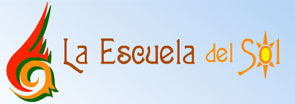
Recent Posts

Read more →

Montezuma Yoga
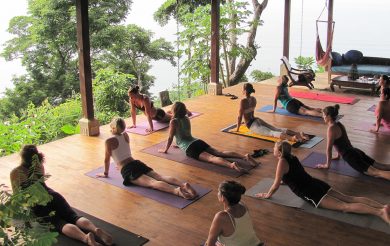
Yoga Teacher Training at Anamaya
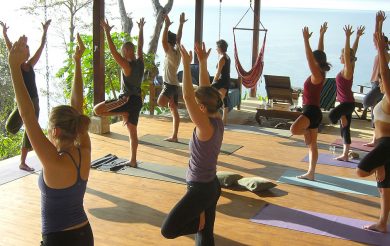
Anamaya Yoga Retreats
Clandestina Restaurant
My new favorite restaurant, Clandestina is not to be missed by food lovers staying anywhere near to Montezuma. Established in March 2015, Clandestina is the new kid on the block. The Oregon/Tico collaboration is a winner among locals and travelers alike, with artisan craft beers, made onsite by Butterfly Brewing Co. and delicious, exciting […]
Added By Geoff McCabe on May 20, 2015
Great Stuff
Cafe Organico – Healthy Food & Open Mic
Aerial silk classes, chunches de mar art camp festival, studio los almendros, dance in montezuma, montezuma fashion shoot and party, montezuma social.

- Accommodation
- Photo & Video Galleries
© 2012, ↑ Montezuma Costa Rica

No hay productos en el carrito.
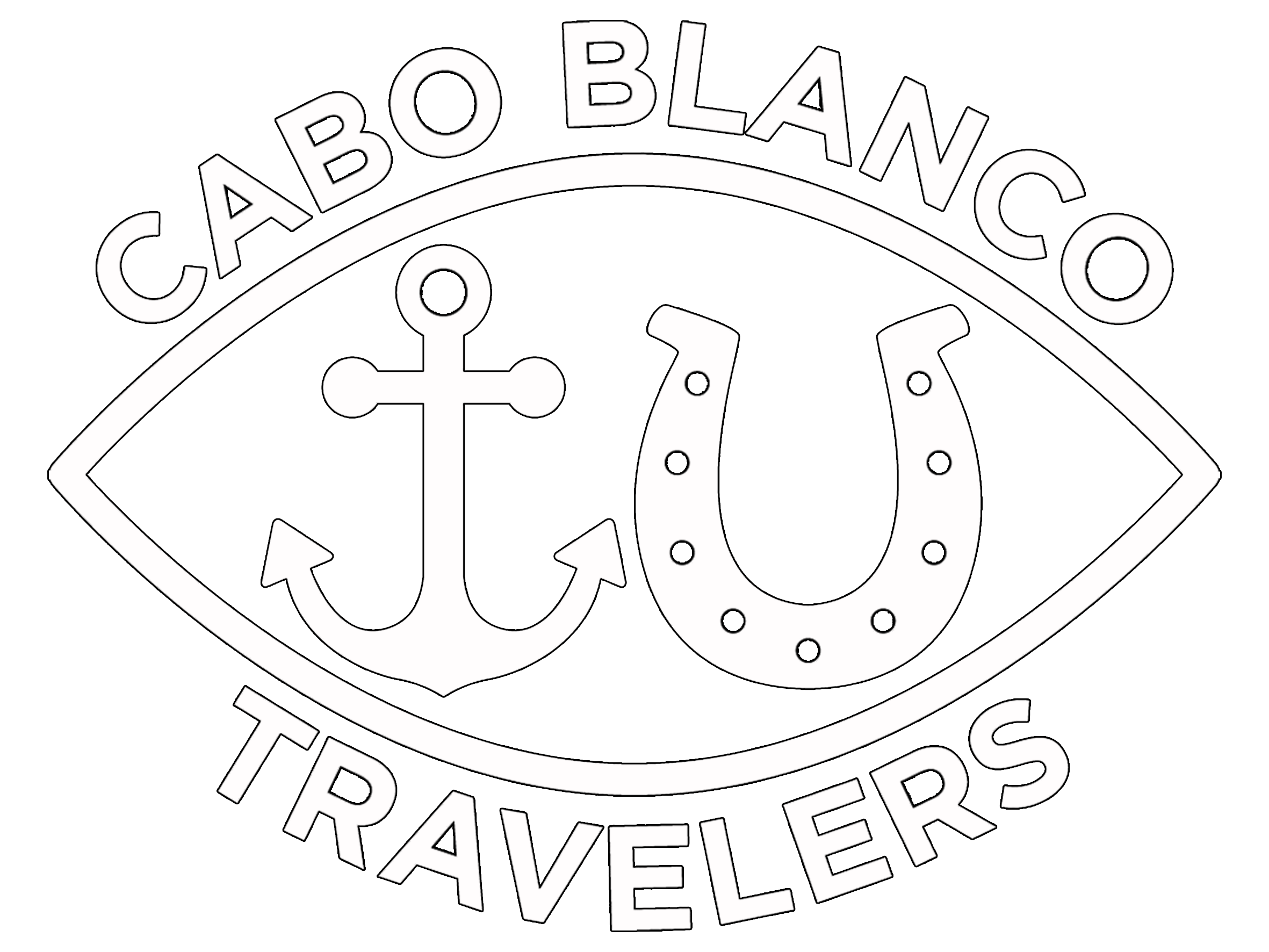
Reserva Cabo Blanco
Venado, Mono congo, Puerco espín, Guatuza, León breñero entre otros.
Ropa y zapatos cómodos y livianos, sombrero, protección solar repelente mucha hidratación & snacks para el camino.
I've visited Cabo many times. One change to my travel plans made my last trip the best yet.
- I've traveled to Cabo many times, but this was the first time I rented a car there.
- It was one of the best decisions I've ever made because I got to experience more local life.
- If you're planning a trip to Cabo , I highly recommend getting a car to explore more of the region.

I've traveled to Cabo — both San Jose del Cabo and Cabo San Lucas — more times than I can count to attend weddings, bachelorette parties , birthdays, and personal trips.
I know the best hotels (Waldorf Astoria Los Cabos Pedregal and Drift San Jose del Cabo) and dining experiences (El Farallon and Flora Farms). I can tell you exactly where to swim (Medano Beach) and who to book your whale-watching tour with ( In Cabo ).
Even though I'm a self-declared expert, I've largely done the same rotation of things on each visit. But on my last trip, I changed things up by renting a car to make my vacation more of an adventure.
I researched, learned the rules of the road (nothing too out of the ordinary), and booked a vehicle that I picked up at the airport.
Looking back, that one travel-planning tweak made such a big impact on my Cabo trip.
With a car, I could easily venture outside Cabo and explore more of Baja
Instead of spending most of my time in central Cabo, I used my rental car as an excuse to explore more of the Baja California state.
I drove a little over an hour northwest along the coast to Todos Santos. Along the way, I stopped at an organic market on the side of the road called Agricole Cooperative that I never would've visited otherwise.
Related stories
I did some research ahead of time and found out it's known for its strawberries and cream dessert. After ordering it, I completely understand the hype.
Todos Santos was such a charming town that I decided to make a whole day of exploring it.
I had a delicious seafood lunch at Oystera, a chic oyster restaurant and bar, before hitting local shops like Nomad Chic and Zocalo on Todos Santos Road.
I got ice cream at Baja Tasty then drove 10 minutes to check into Paradero Hotel for the night. It features stunning architecture that blends nearly seamlessly into the beautiful natural setting around it.
My room was on the second floor, so I was able to gaze at the beautiful scenery from an outdoor flat-net hammock that hung over the desert garden.
By the first evening, I was already getting a better sense of the region and the local culture, and I wasn't surrounded by tourists like I typically am when in Cabo.
The flexibility and freedom allowed me to do more than I ever have before
The following day, I headed to La Paz, the capital of Baja California Sur.
Since I had my own car, I could make roadside stops at popular spots along the way, like La Garita del Chilpa restaurant. I grabbed coffee and a bag of "snoring" cookies that soften and crackle when dunked in hot liquid.
After my pit stop, I continued driving north for a little over an hour to reach La Paz, which is known for its fantastic marine life .
The city, located on the Gulf of California, is famous for whale-shark diving and snorkeling — there's even a statue of a whale shark on the waterfront promenade. Unfortunately, I missed the opening of the season by a few days.
Instead, I quickly checked into the retro Baja Club Hotel, grabbed an ice cream from La Michoacana, and immediately drove to Balandra Beach.
The beach only allows visitors to enter twice a day, once in the morning and once in the afternoon. I recommend asking a tour agency when the opening times are for the day you're visiting.
After lounging in the sun, I dined at the trendy Quemadero restaurant. It had views of the sea, indoor and outdoor seating under string lights, and a hidden nightclub.
My adventures didn't stop there, though. The next day, I took a 45-minute boat ride to Isla Espiritu Santo and spent the day diving with sea lions and other underwater life.
I ended the night with an intimate dinner at Nemi, followed by drinks on the roof of República Pagana.
I can't imagine visiting Cabo without a car ever again
Even with the extra travel time — a little over an hour each to Todos Santo and La Paz and about two and a half hours back to Cabo — renting a car was one of the best decisions I made on my trip.
I still got to do all of the things I typically do in Cabo, but I also had the flexibility and freedom to venture out and get to know the Baja culture, foods, and locals.
It was such a great way to get out of the touristy areas and learn more about the region's beauty. As a woman traveling alone , I also felt completely safe throughout the entire journey.
Renting a car on vacation — especially in another country — can seem over-complicated and daunting. But if you're planning a trip to Cabo, I highly recommend taking the leap.
Watch: How 60,000 tamales are made for The Junta in Mexico
- Main content

IMAGES
COMMENTS
Cabo Blanco Travelers es un operador turístico con un espíritu libre & aventurero que caracteriza cada uno de nuestros tours y guías. Viajamos a todos los rincones de Costa Rica, asombroso país con exuberante naturaleza, vida silvestre y maravillosos paisajes. Como tour operador deseosos de compartir estos majestuosos destinos, e increíbles espectáculos le invitamos a viajar a nuestro ...
Cabo Blanco holds a special place in the history of Costa Rica. It was the country's first area that was protected for nature conservation, and the first National Park created in Costa Rica in 1963. See The History of Cabo Blanco
Tips for visiting the remote Cabo Blanco Nature Reserve. Trail options, conditions, hiking to the beach, and how to get there.
The Cabo Blanco Absolute Natural Reserve, created in 1963, is recognized as the first protected area of Costa Rica. Here we have the opportunity to show you the magic of its forest, the important history that surrounds it, as well as the great impact it had on the Costa Rican economy and conservation. This tour is perfect for nature lovers.
Top ways to experience Cabo Blanco Absolute Natural Reserve and nearby attractions Private Nature Tour in Cabo Blanco Park Costa Rica 3 Ports of Call Tours from $140.00 per adult Inshore Fishing trip in Santa Teresa 36 Recommended Fishing Charters from $350.00 per group (up to 5) Bioluminescent Kayak Tour 125 Recommended Kayaking Tours from $36 ...
The Tour starts at 7 am leaving from your hotel, the naturalist guide will pick you up on a mini van. Make sure you bring water and comfortable closed shoes, the walk is up hill, so take it under consideration, but nothing dangerous or hard to accomplish for a family group. The Cabo Blanco Nature Reserve, besides its beautiful flora and fauna ...
Top Cabo Blanco Tours: See reviews and photos of tours in Cabo Blanco, Costa Rica on Tripadvisor.
Cabo Blanco Absolute Natural Reserve: Where Nature's Legacy Flourishes Stretching across 3,070 hectares or 7,586 acres, Cabo Blanco Reserve embraces an elevation spectrum ranging from sea level to a gentle 5 meters (0 to 16 feet). Here, a diverse tapestry unfolds, where lush rainforests, sun-drenched beaches, meandering mangroves, and life-rich riverbanks converge. Immerse yourself in nature's ...
The Cabo Blanco Absolute Natural Reserve, created in 1963, is recognized as the first protected area of Costa Rica, here we have the opportunity to show you the magic of its forest, the important history that surrounds it, as well as the great impact it had on the Costa Rican economy and conservation. This tour is perfect for nature lovers, during this enriching tour, you will have a local ...
Soak up the grandeur of the world-renowned Cabo Blanco Absolute Natural Reserve, hiking in the mist of tall Guanacaste, fichus and spiny cedar trees, listening to its wild bird sounds and calls, and sighting wildlife. You will unveil your own innate respect for all natural resources - even those ones back home - that allowed this reserve to thrive.
Cabo Blanco Costa rica's National park since 1963 A hike deep inside a tropical jungle that practically hugs the Pacific Ocean. Let us take you to a magical natural wonder. Come back to Mal Pais and Santa Teresa after the hike with a great appreciation to nature.
This tour includes a bilingual guide, drinks and transportation from Mal Pais, Montezuma, Tambor and Santa Teresa. Transportation for clients staying in Ylang Ylang is not included, clients need to arrive at Sano Banano. Depending on where you are staying, one way transportation from your hotel to the Reserve can take between 20 and 45 minutes.
The Cabo Blanco Natural Reserve sits at the very tip of the Nicoya Peninsula and was founded in 1963. There isn't a whole lot of infrastructure around and getting there is a little bit of an adventure. Cabo Blanco is Costa Rica's first protected reserve and includes both dry tropical forest and tropical rainforest .
Reserva Natural Cabo Blanco in Costa Rica is the perfect place to spend the day hiking surrounded by wildlife with a white sand beach backdrop.
The Cabo Blanco Nature Reserve is a wonderful and underrated national park in Costa Rica. Enjoy a lengthy hike through dense tropical forests, a secluded beach and tons of wildlife for a cheap price without the crowds.
Cabo Blanco Absolute Nature reserve protects semi dry tropical forest on the southern tip of the Nicoya Penisula, Costa Rica. The 2 mile long (3 km) trail crosses a ridge and drops down to Playa Banco on the tip of the Nicoya Penisula. The visitors entrance to Cabo Blanco is on the east side of the Peninsula near Cabuya, south of Montezuma.
A favorite of nature and hiking lovers, this tour through the Cabo Blanco Absolute Reserve is of medium grade, so you must be in strong physical condition and in good health. The tour is approximately 5 hours through the forest from the main entrance to the beach.
Canopy Tour Mal Pais, Costa Rica The Mal Pais Canopy Tour is based in the quiet village of Malpais, on a farm with more than 200 different tree species, at the entrance of the Cabo Blanco Absolute Nature Reserve.
Cabo Blanco Travelers. We are a company dedicated to tourism. We do Tour to Tortuga Island, located in the Gulf of Nicoya in Costa Rica, which includes transportation, food and drinks. We also tour on horse to two waterfalls located in the Montezuma Area, and areas of the mountain and beach. We rent RTV Quad, bikes, surfboards, we sell tickets ...
Cabo Blanco is a popular tourist destination for tourists who visit Montezuma and Santa Teresa. They are naturally drawn to the largest national park in the area.
Cabo Blanco Travelers no se hace responsable de objetos perdidos durante el tour. Nos reservamos el derecho de admitir en el recorrido a personas bajo efectos del alcohol o las drogas.
Take a guided hike to look for interesting wildlife—including lots of monkeys and birds—in the Cabo Blanco Nature Reserve.
Pueblo Bonito Los Cabos, Cabo San Lucas Resort: Mediterranean-style beach resort w/ full-service amenities & boutique services.
I've traveled to Cabo — both San Jose del Cabo and Cabo San Lucas — more times than I can count to attend weddings, bachelorette parties, birthdays, and personal trips. I know the best hotels ...